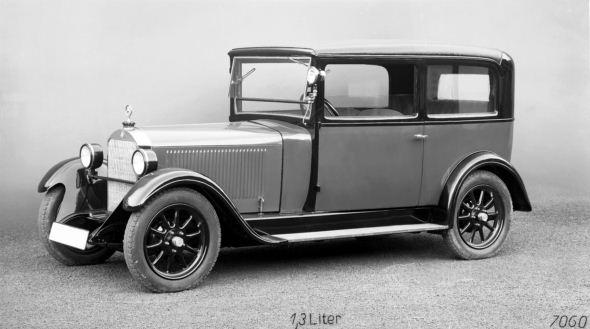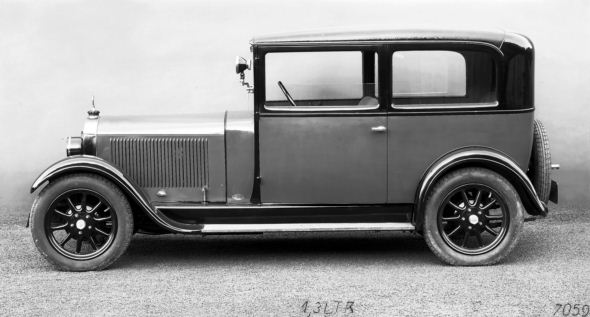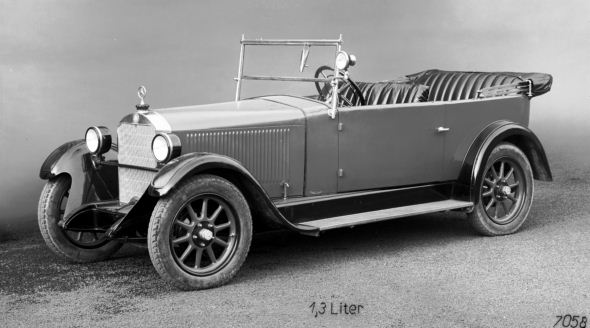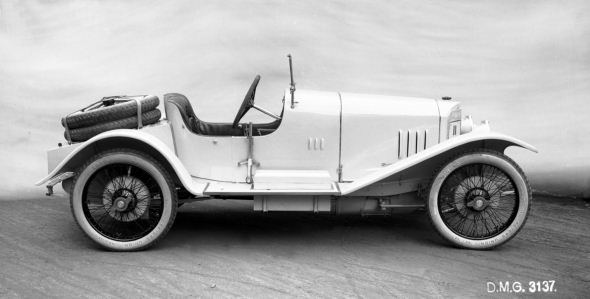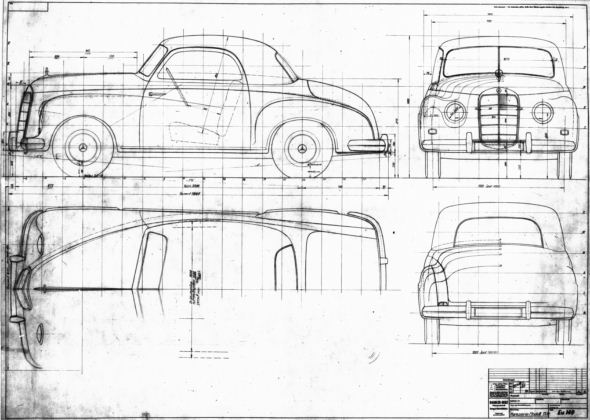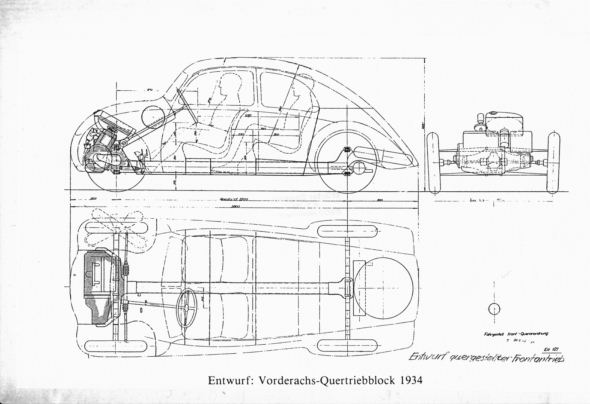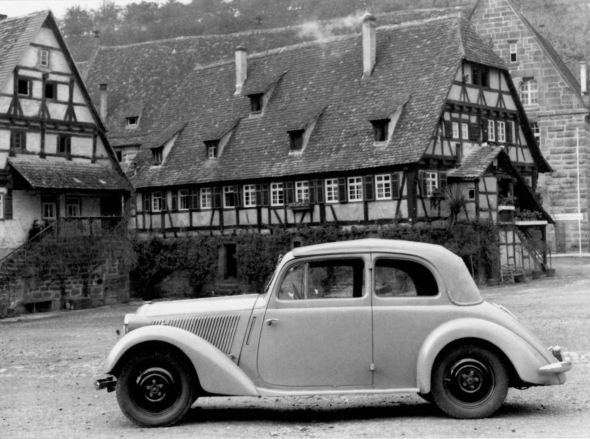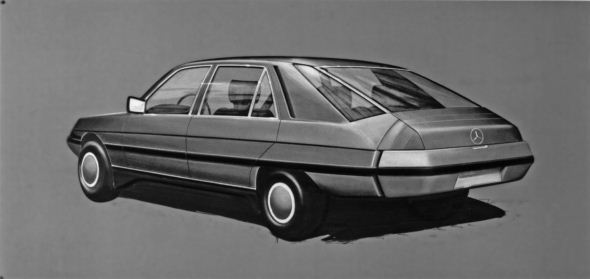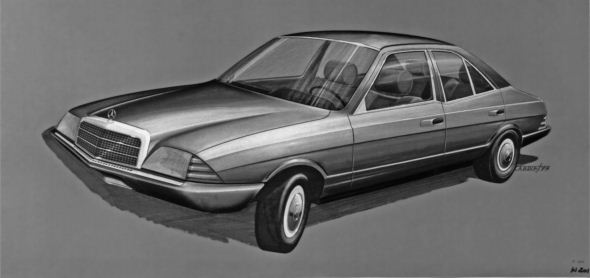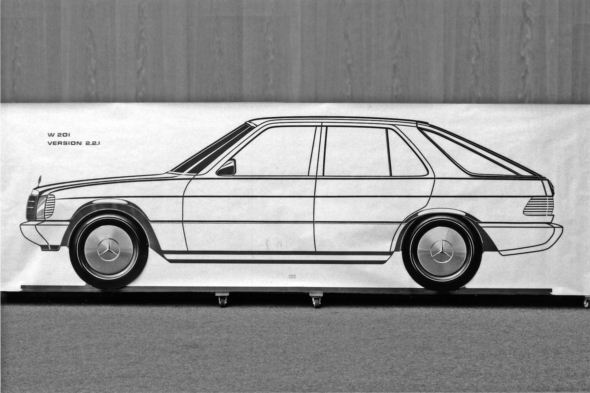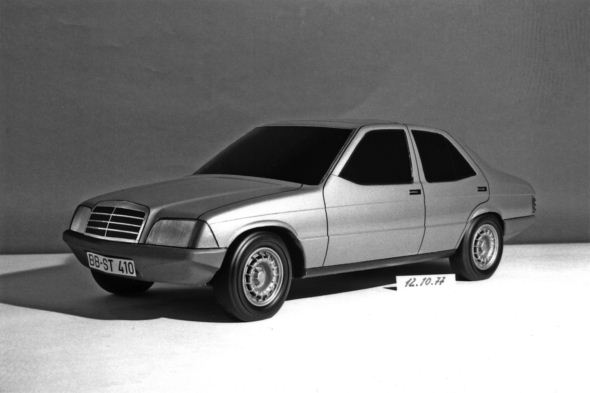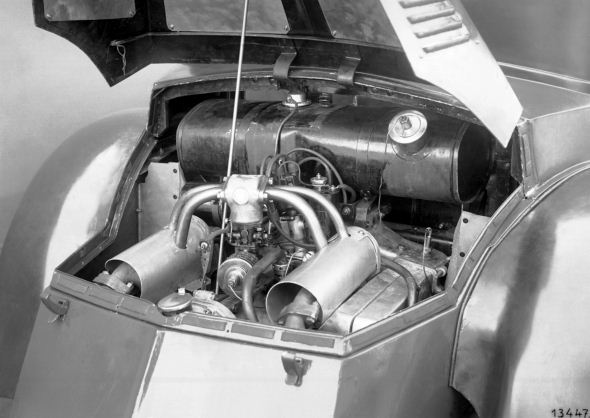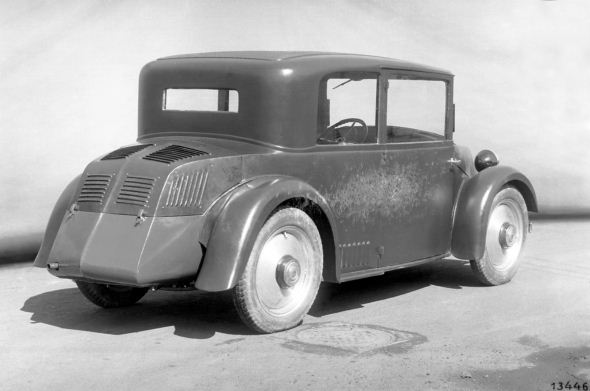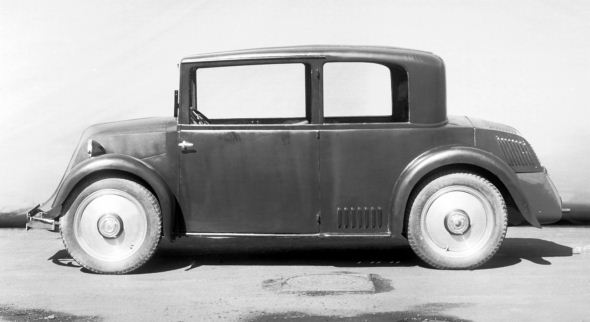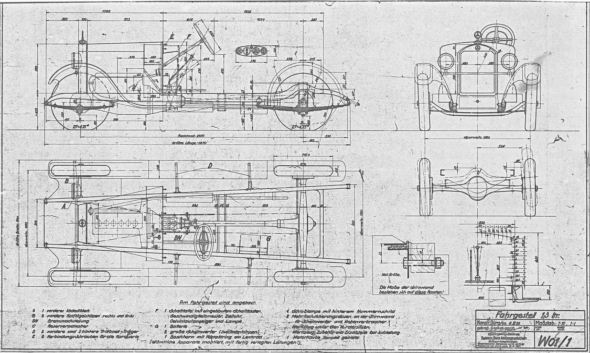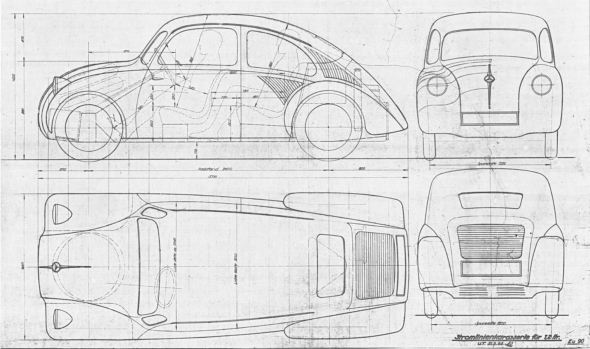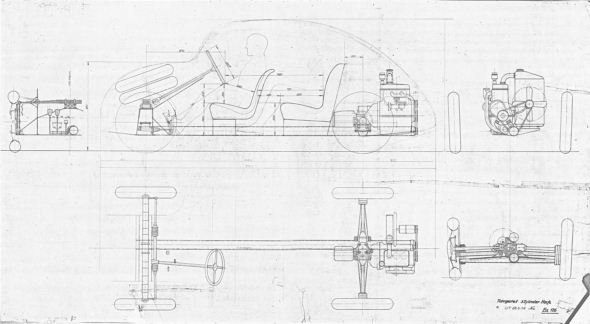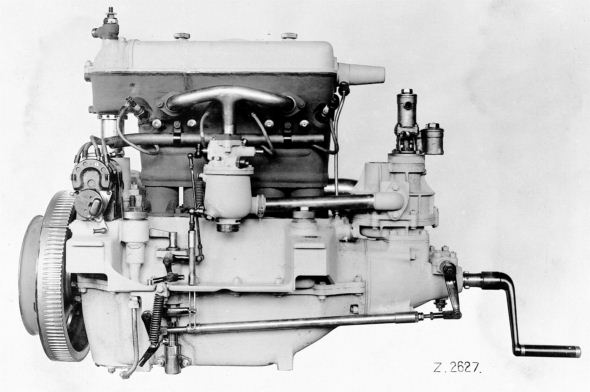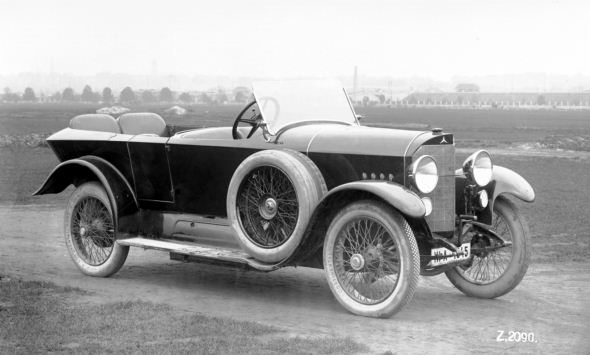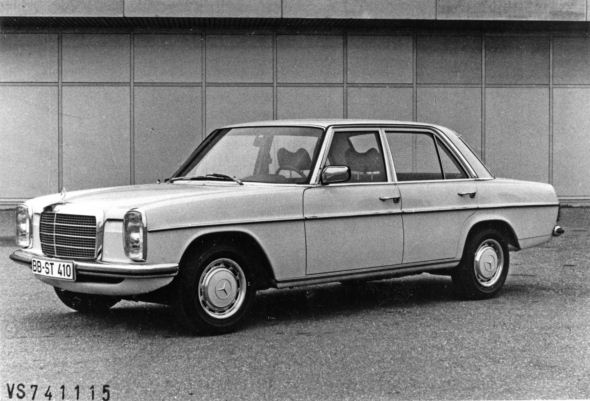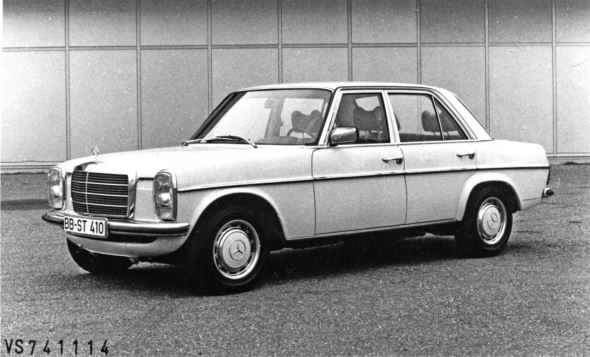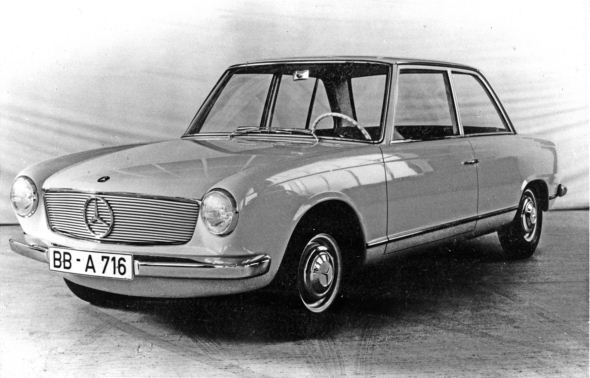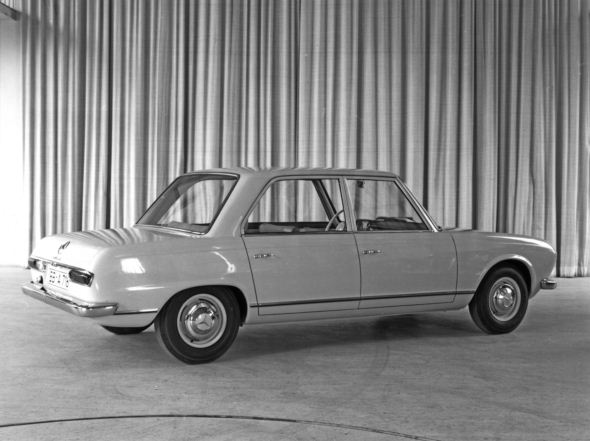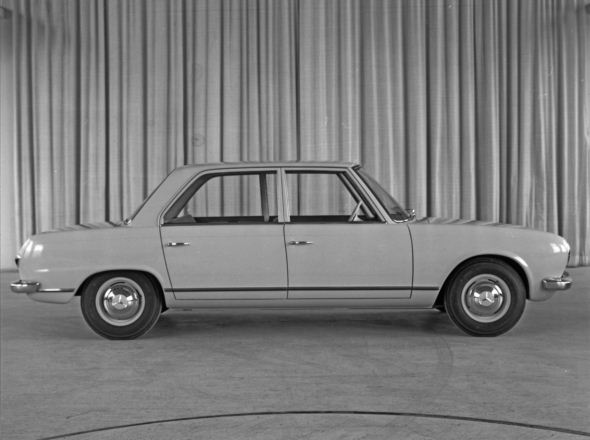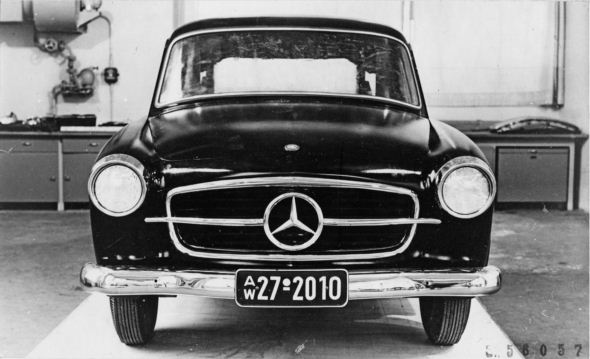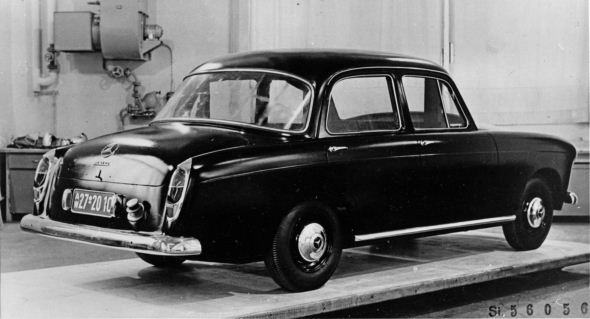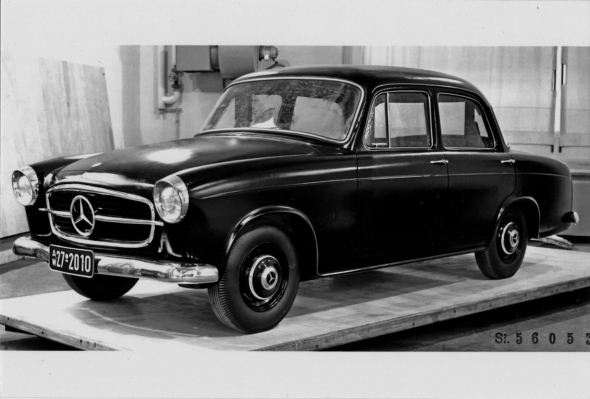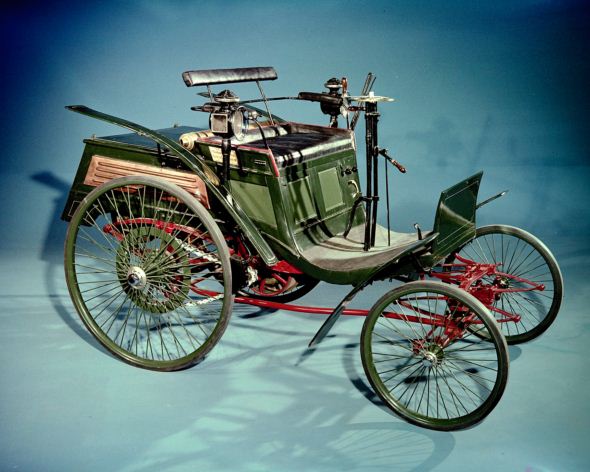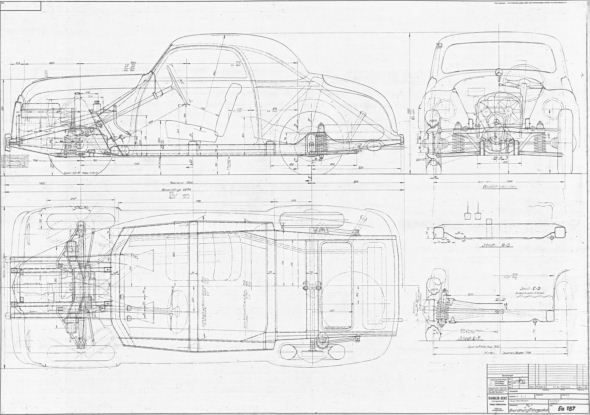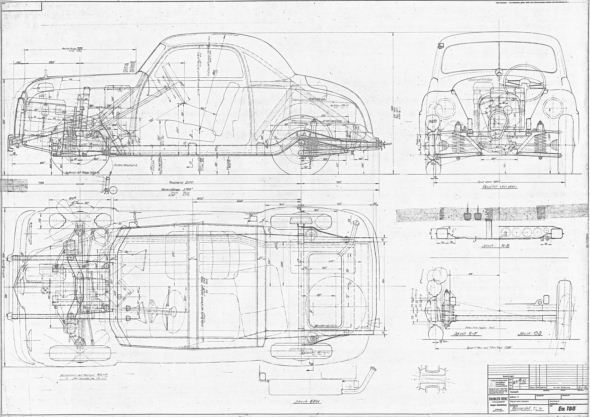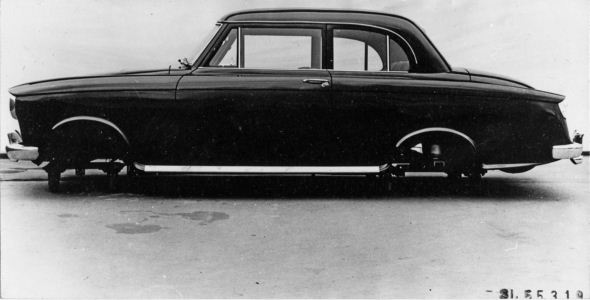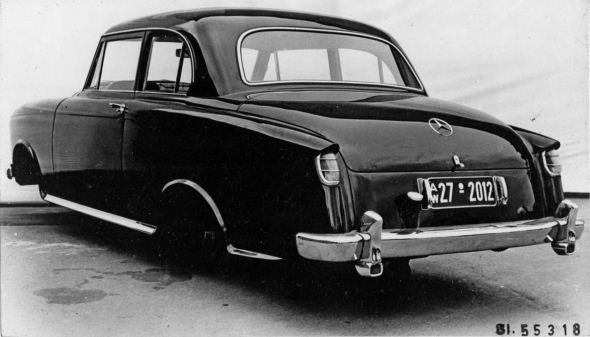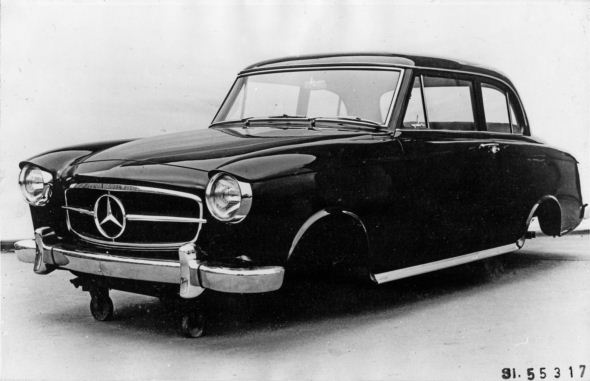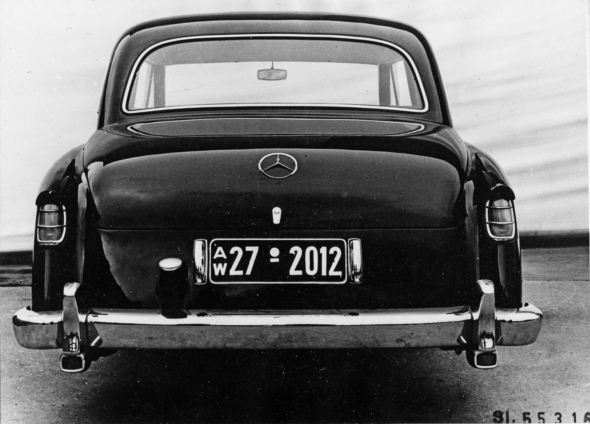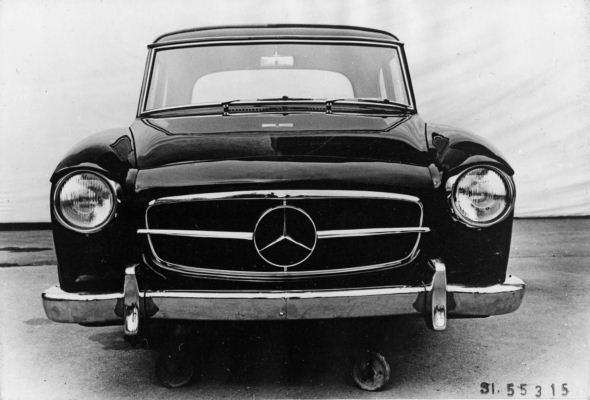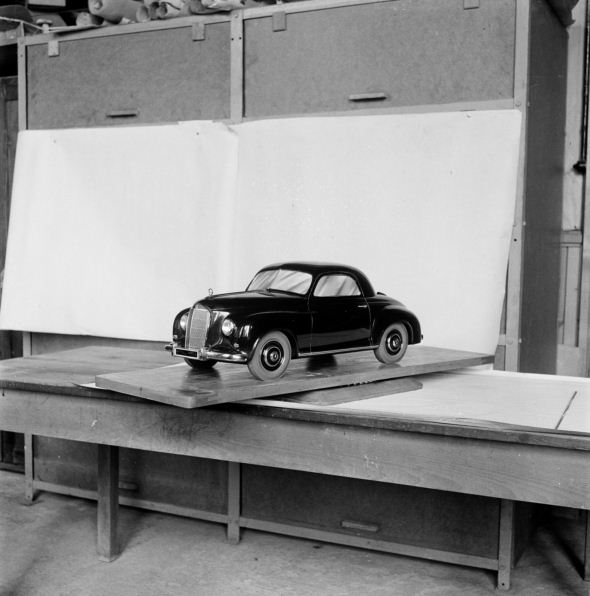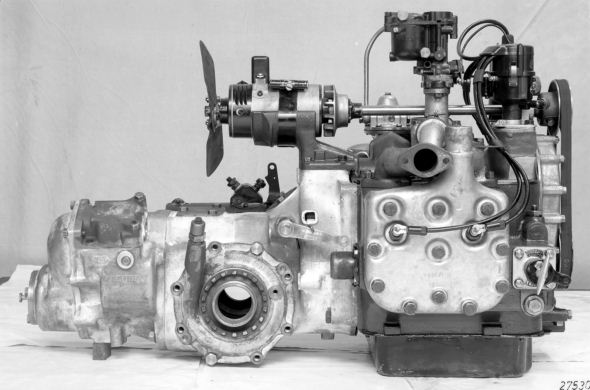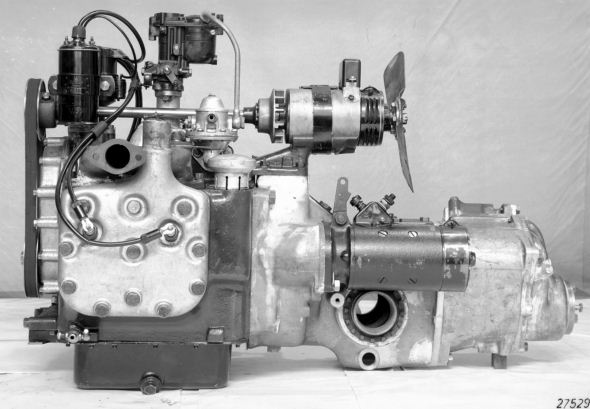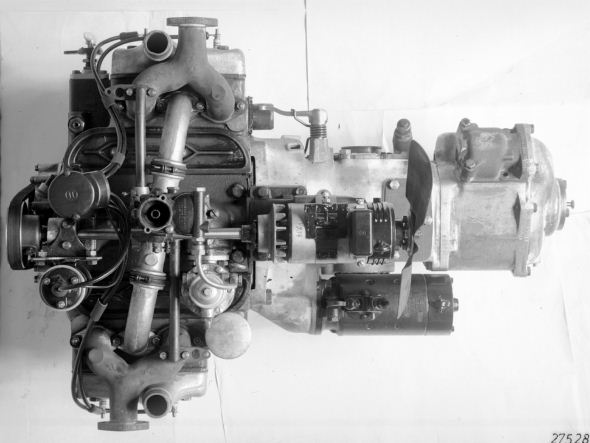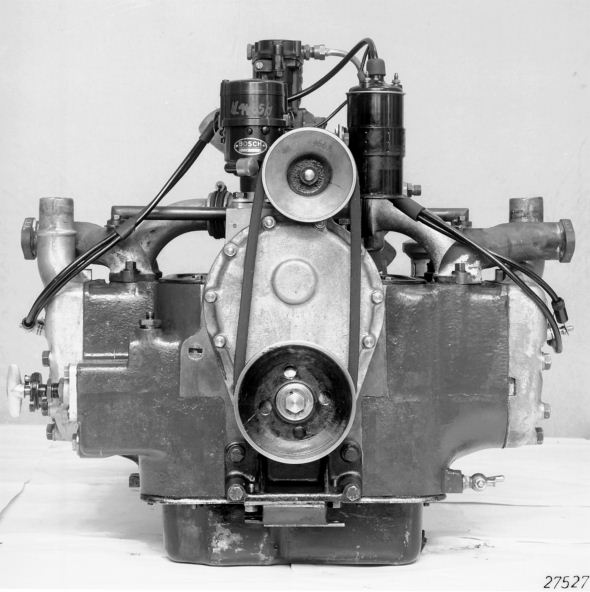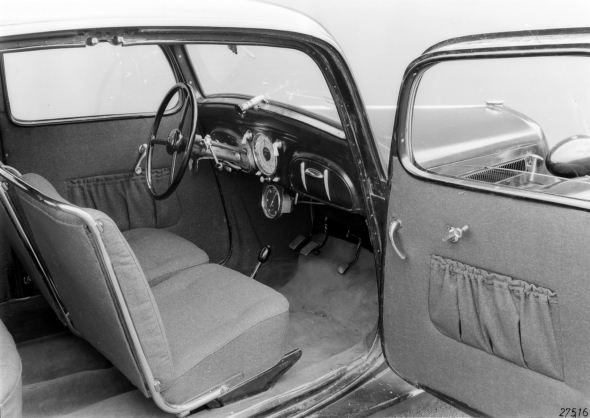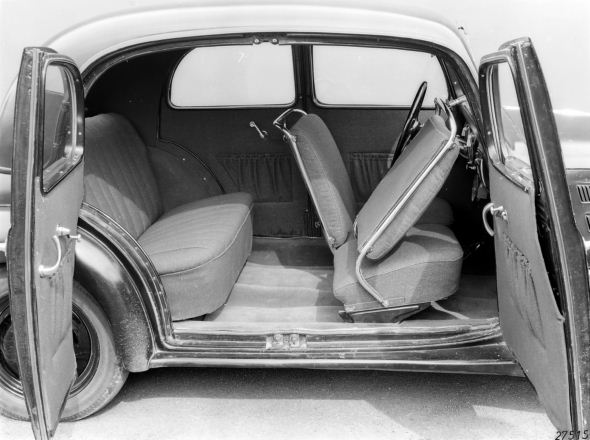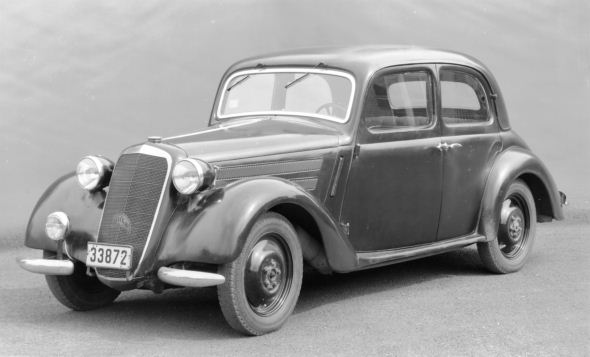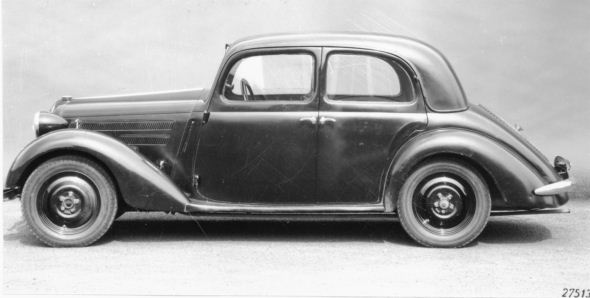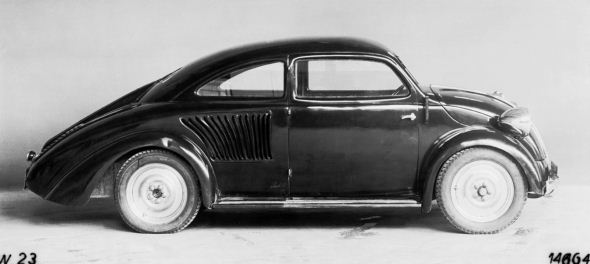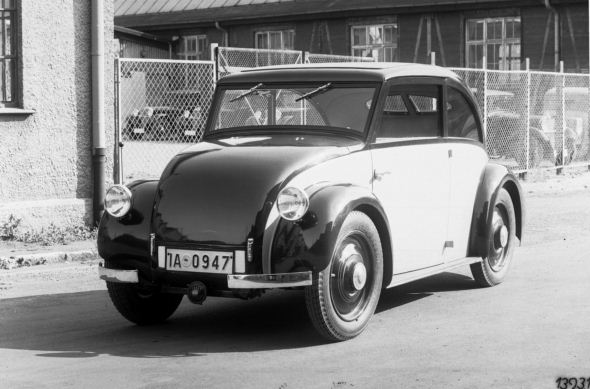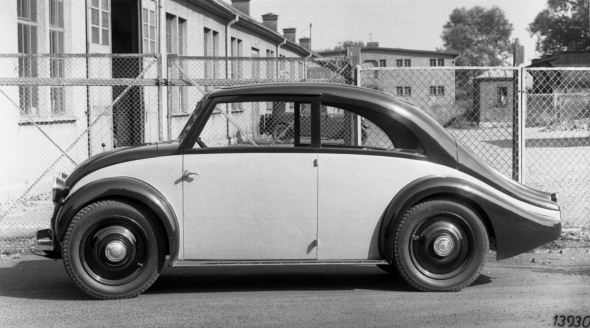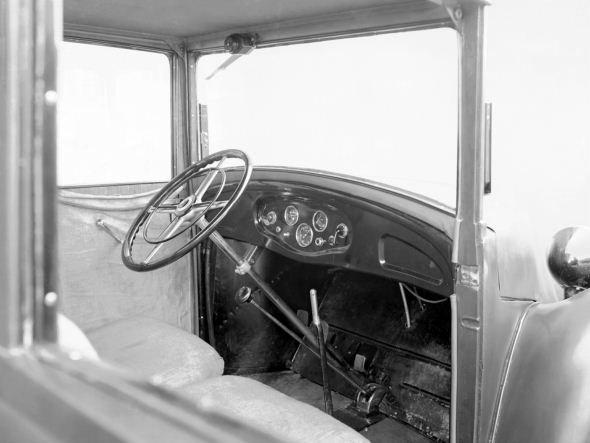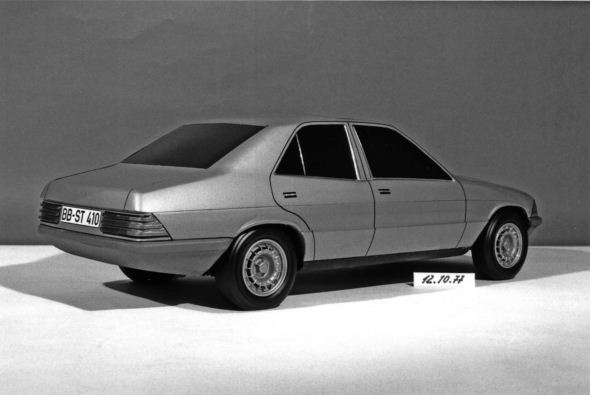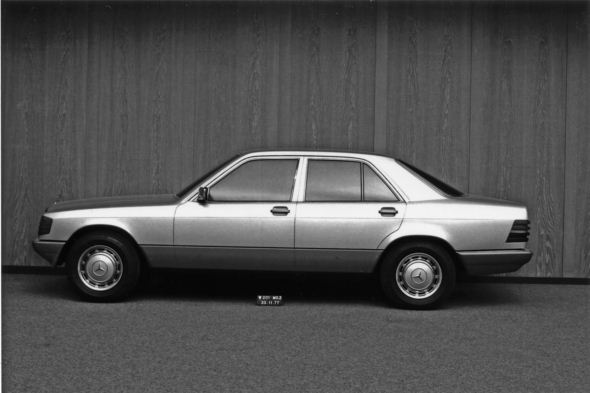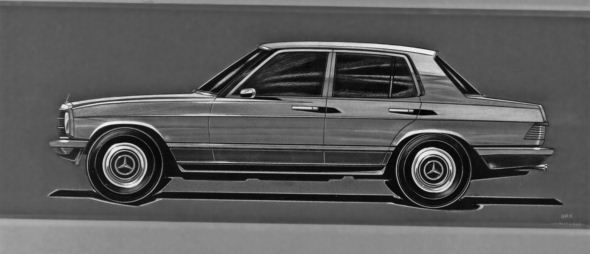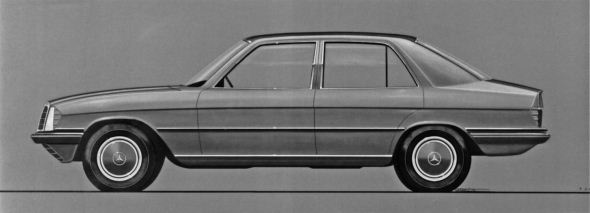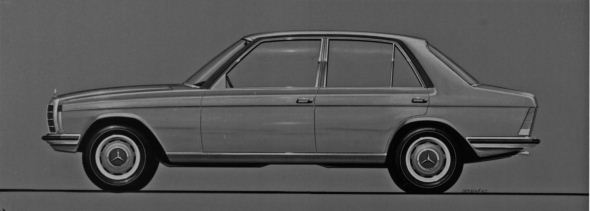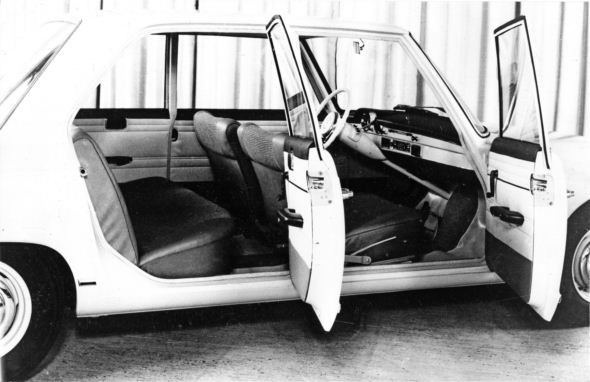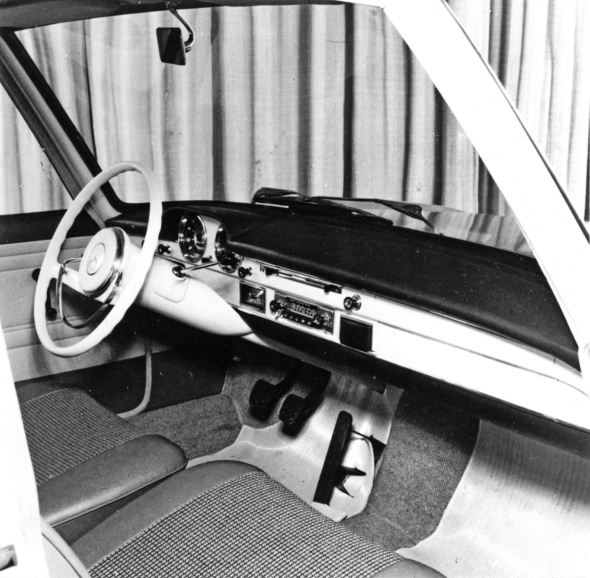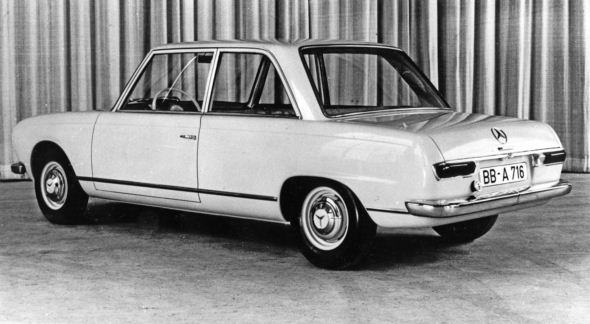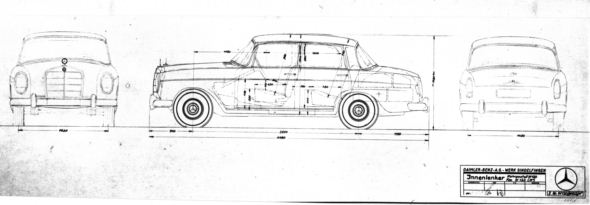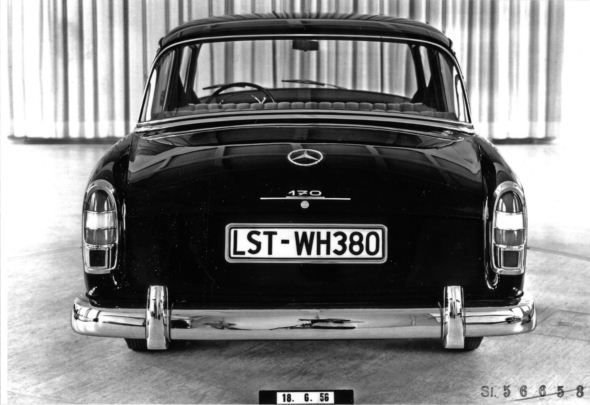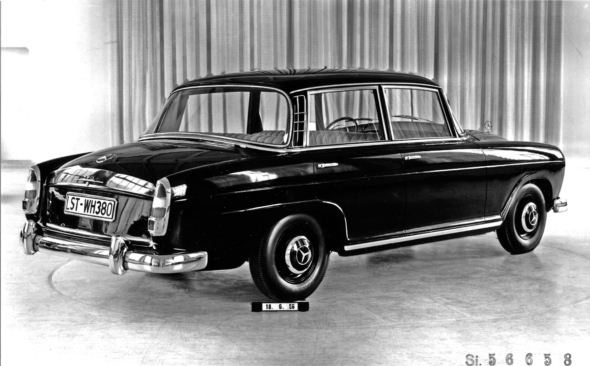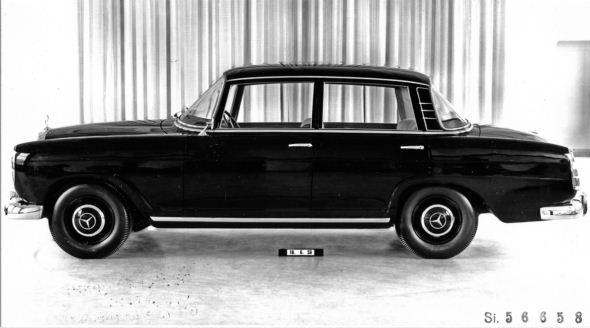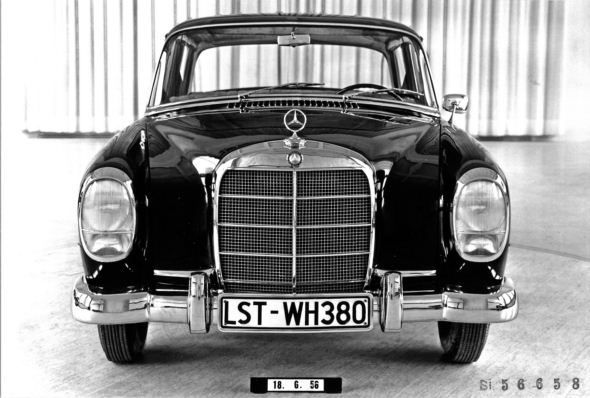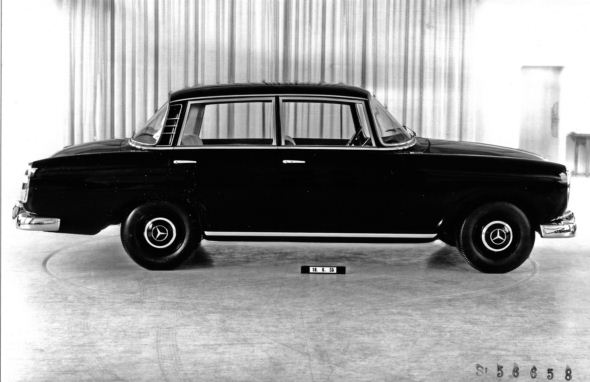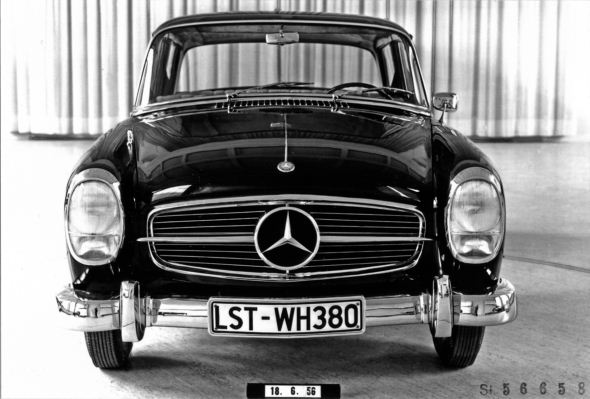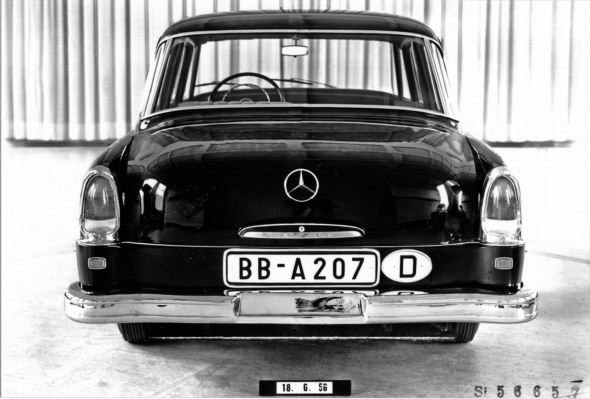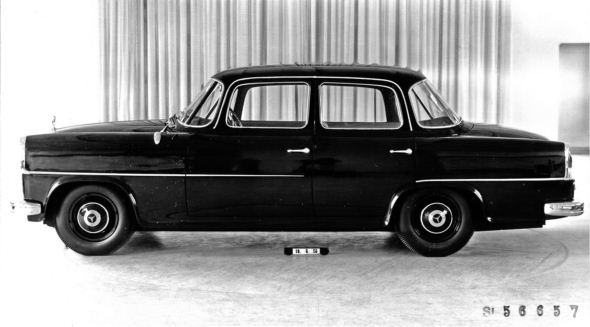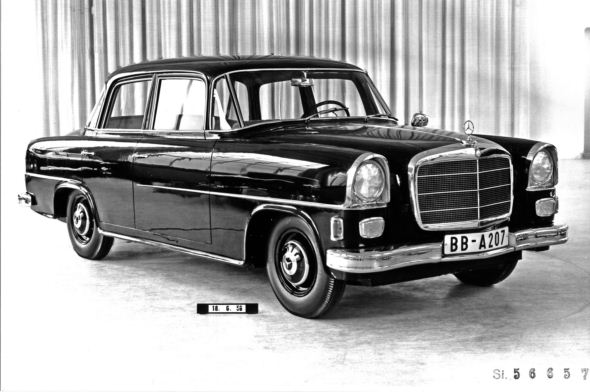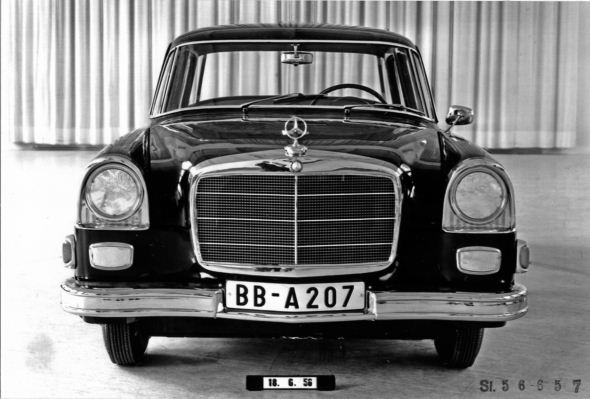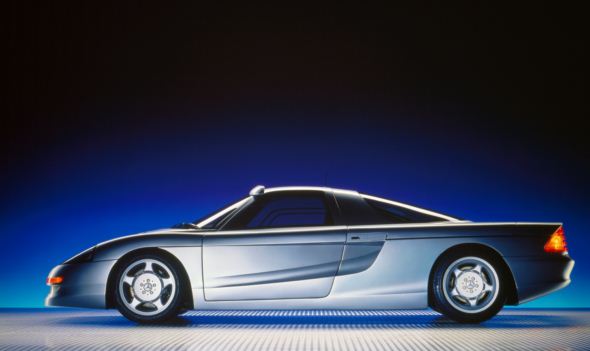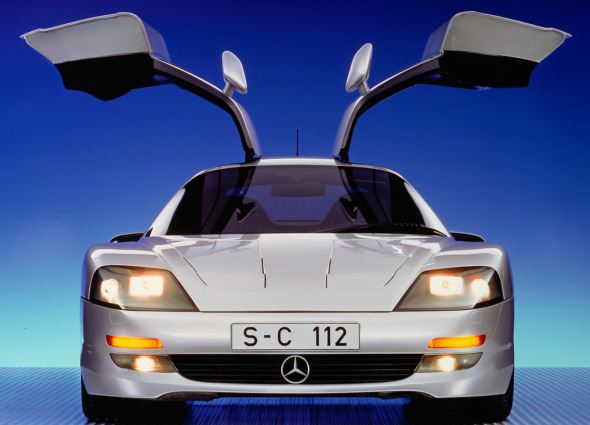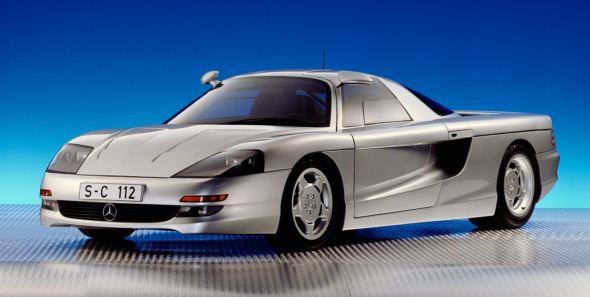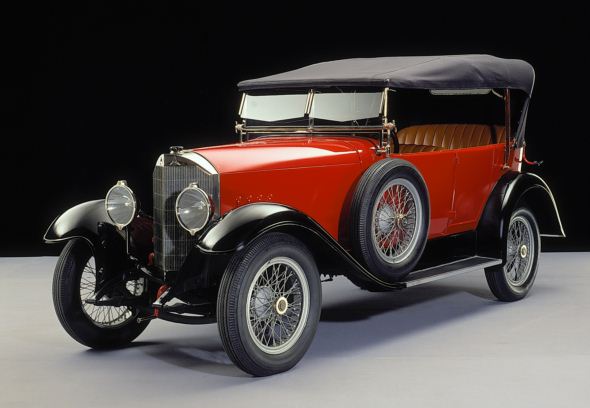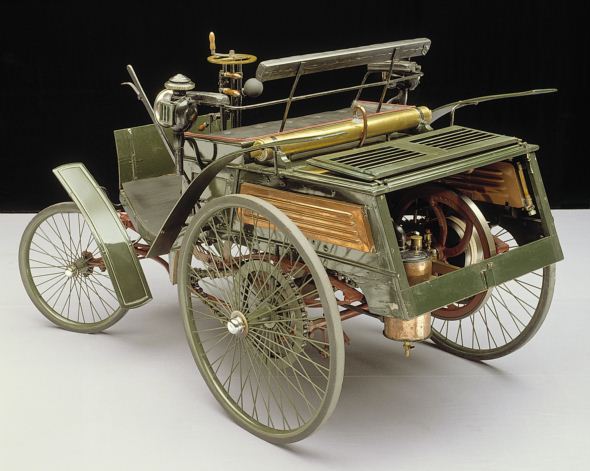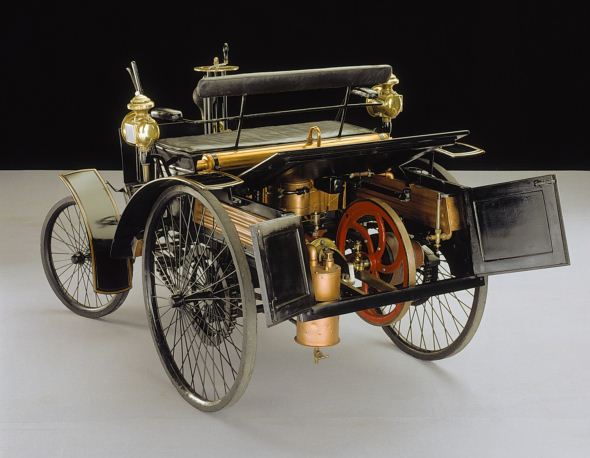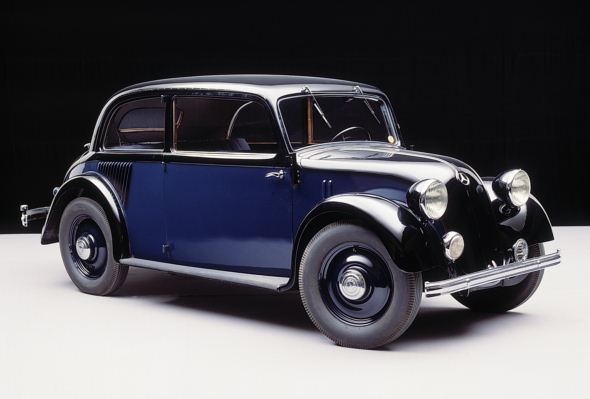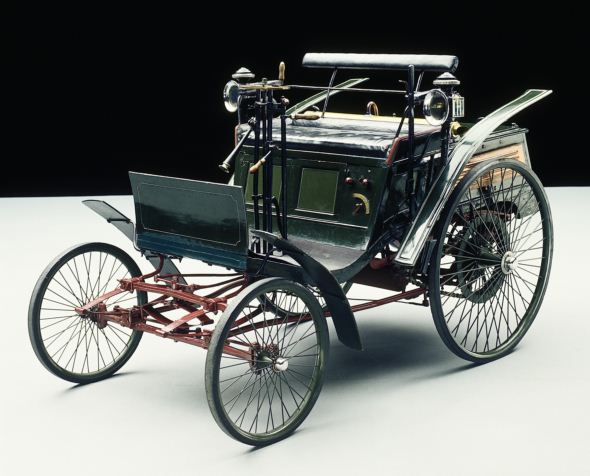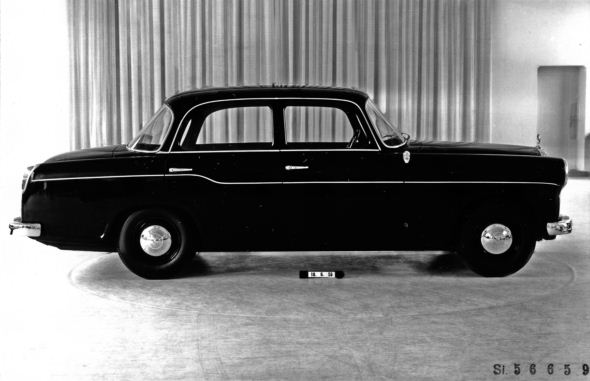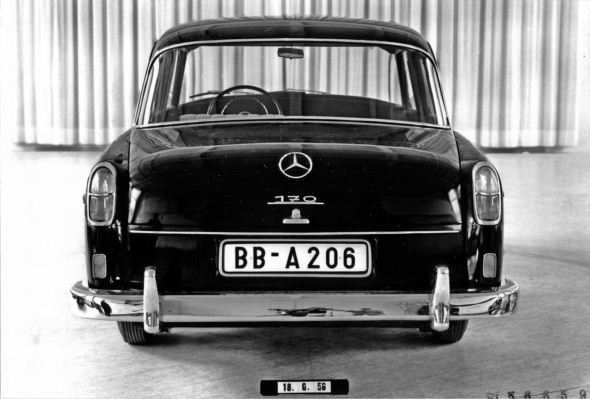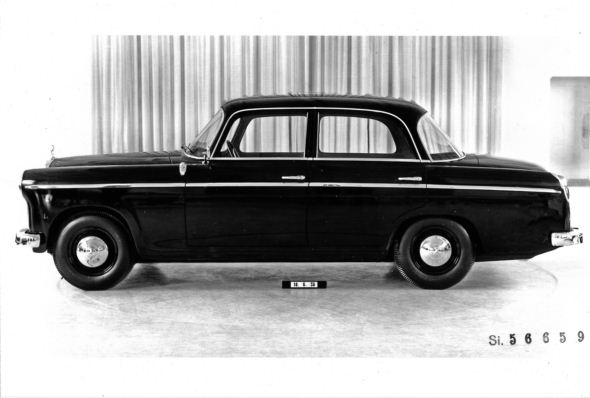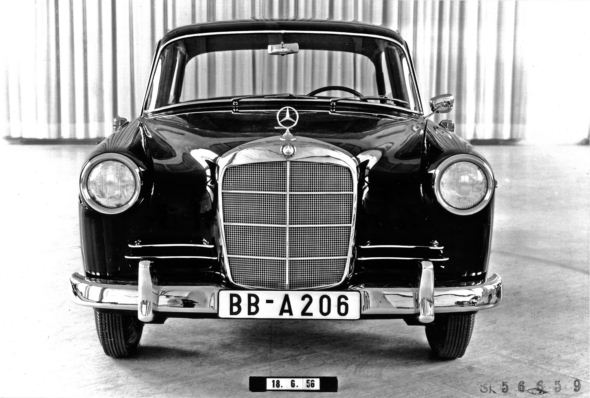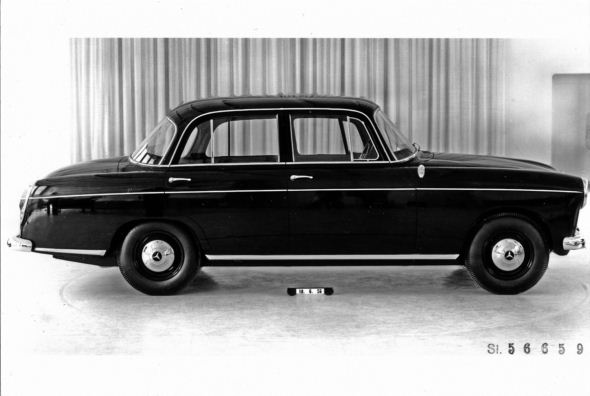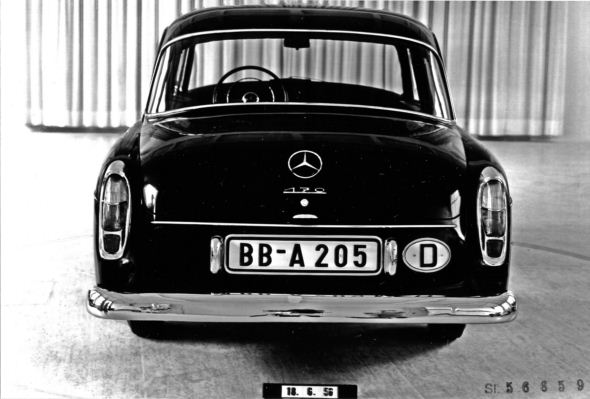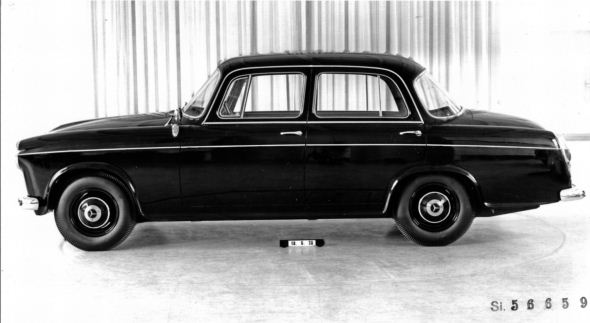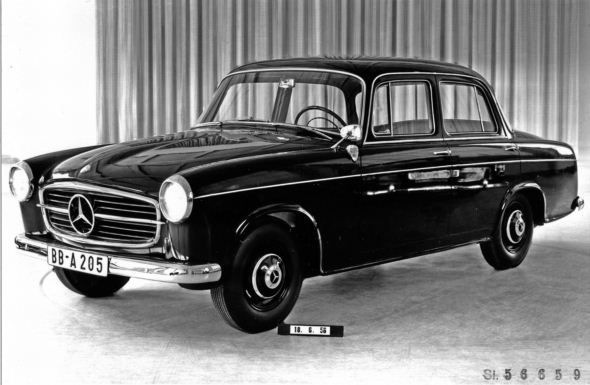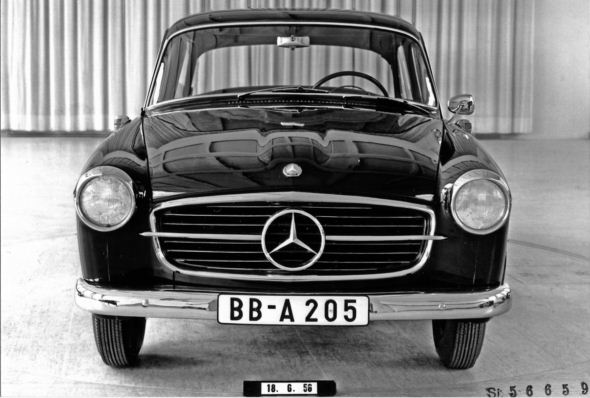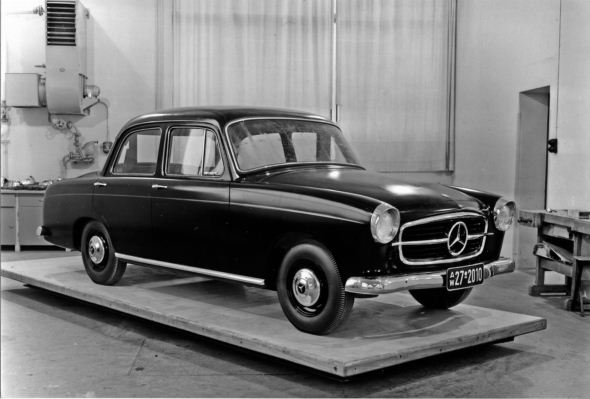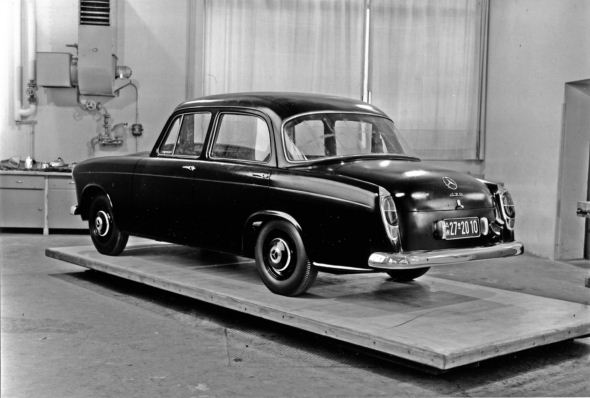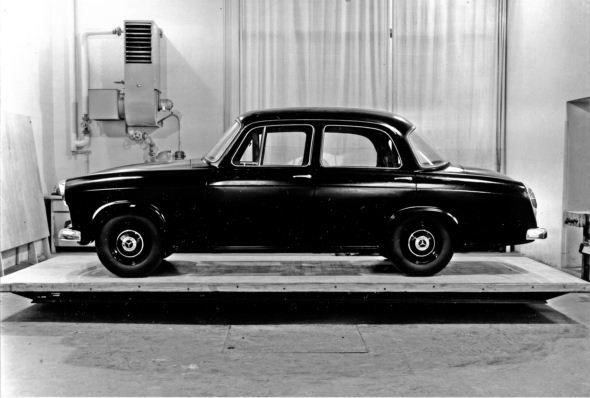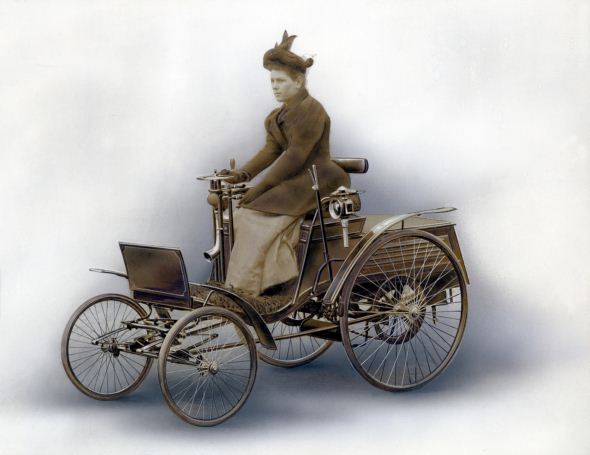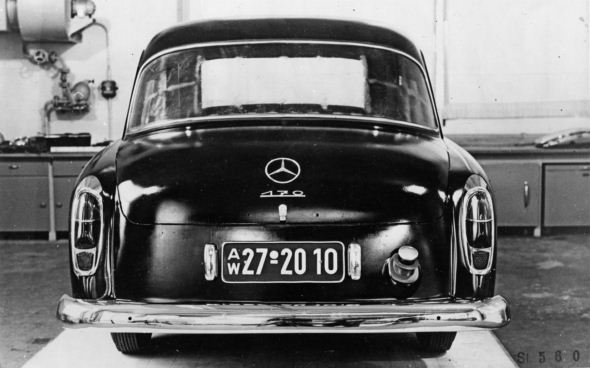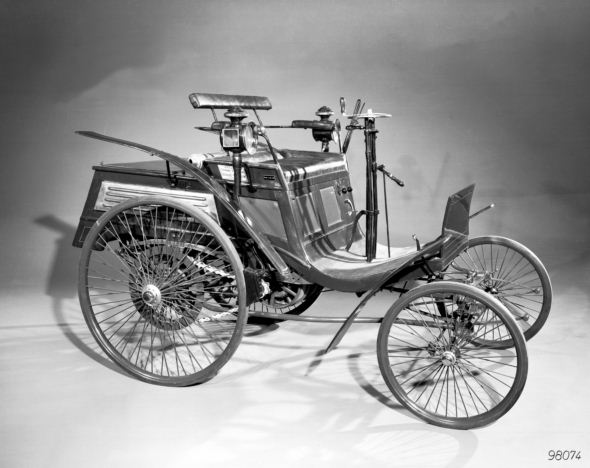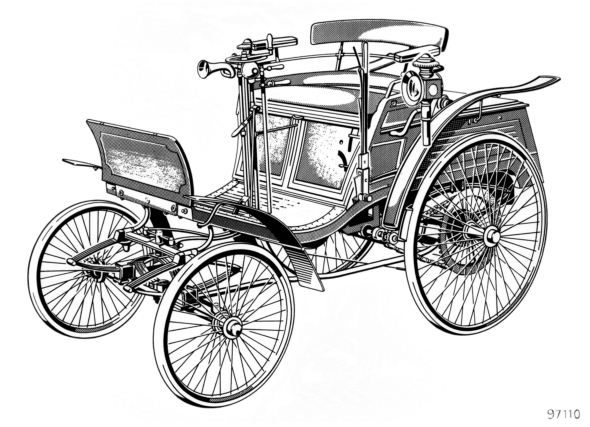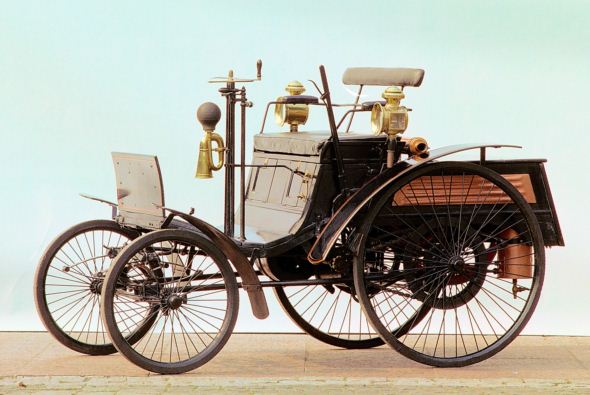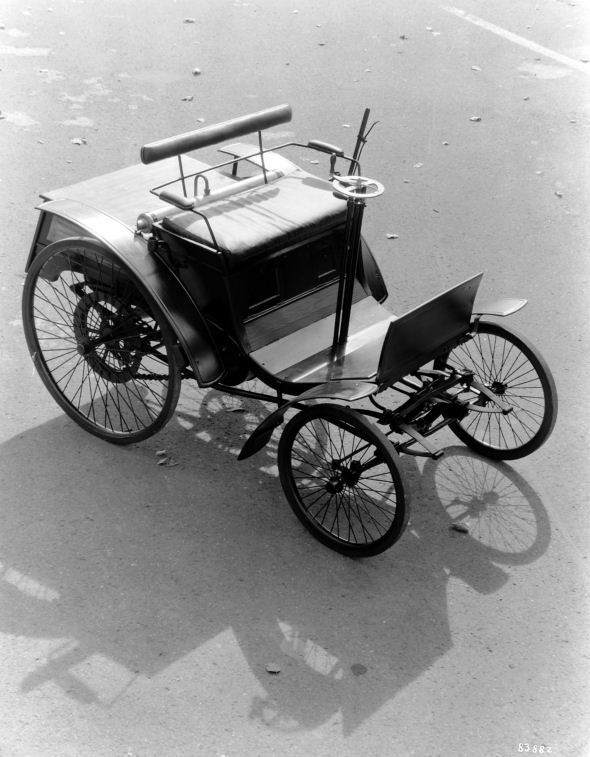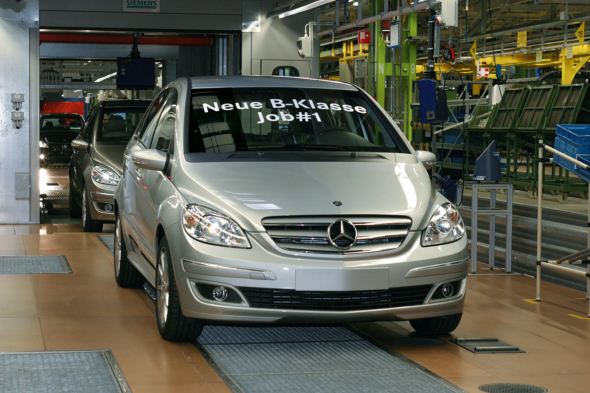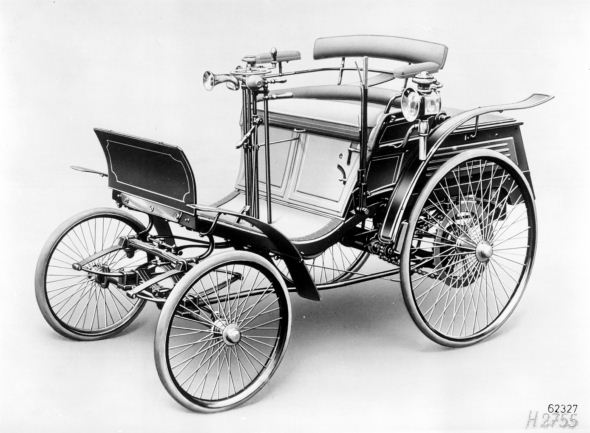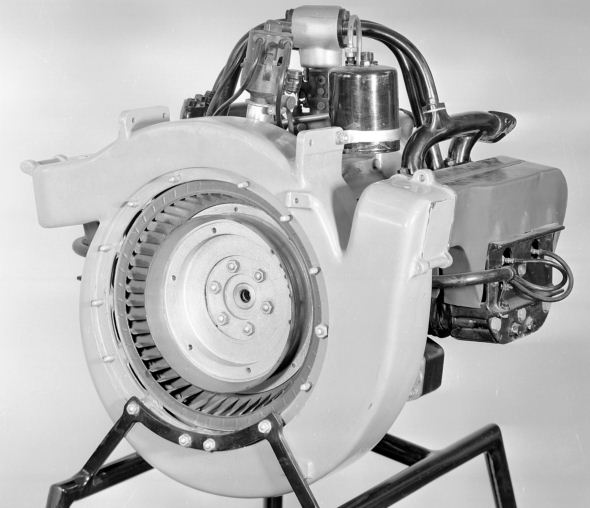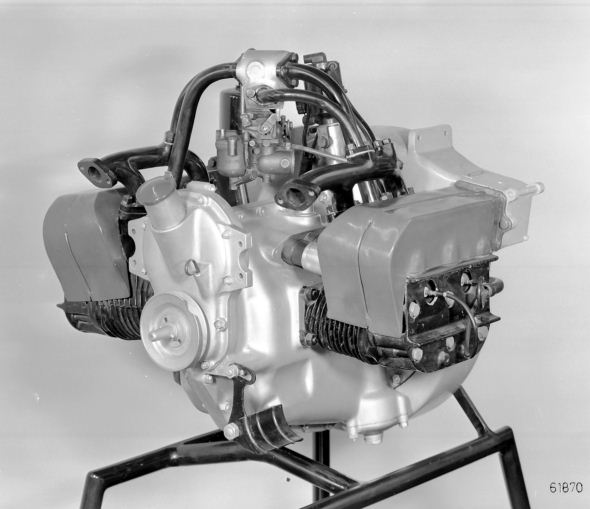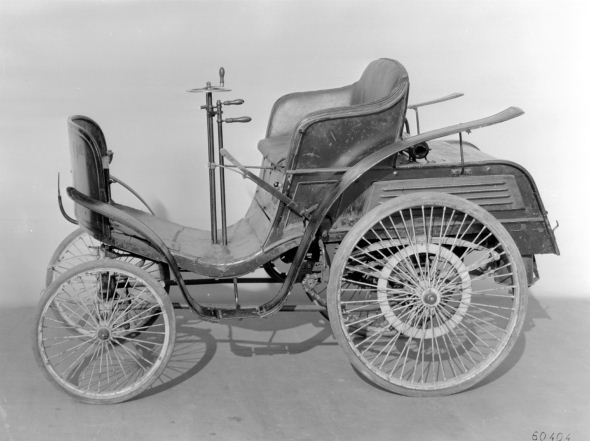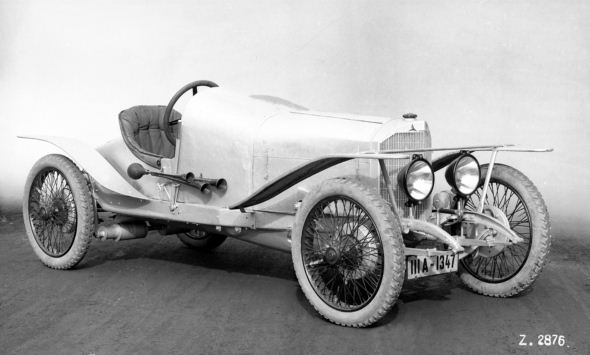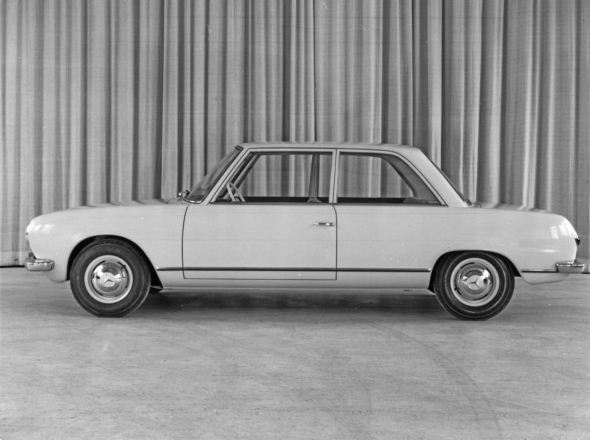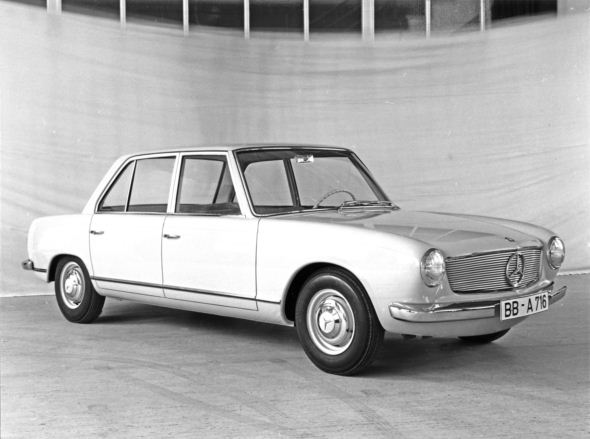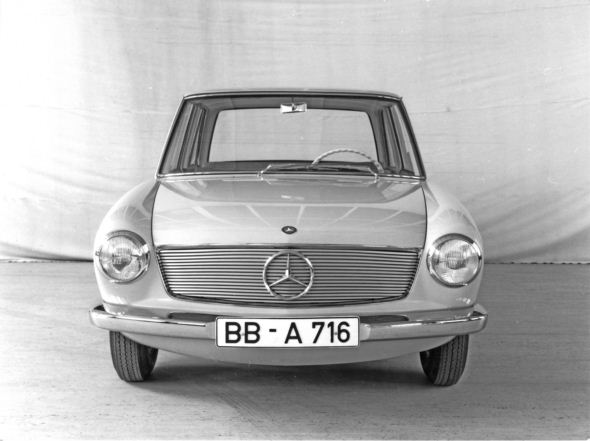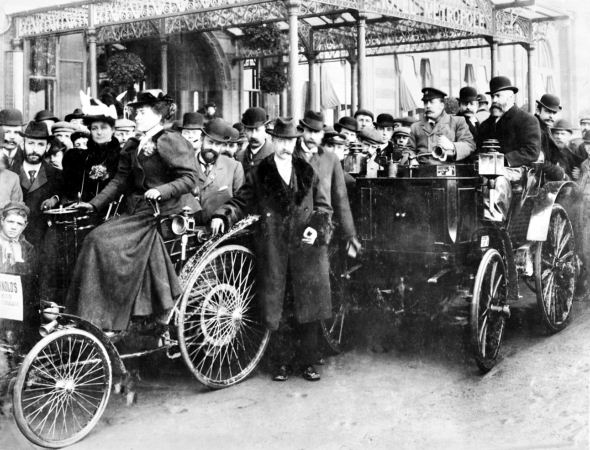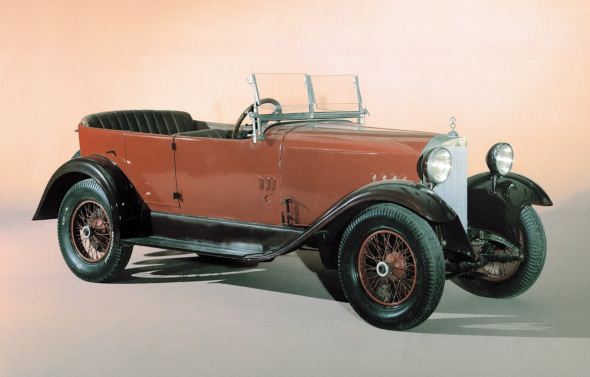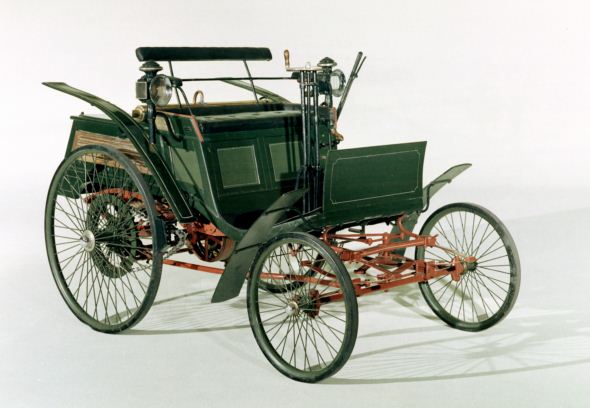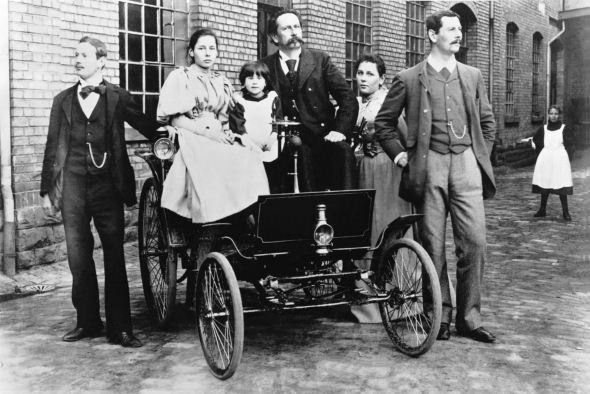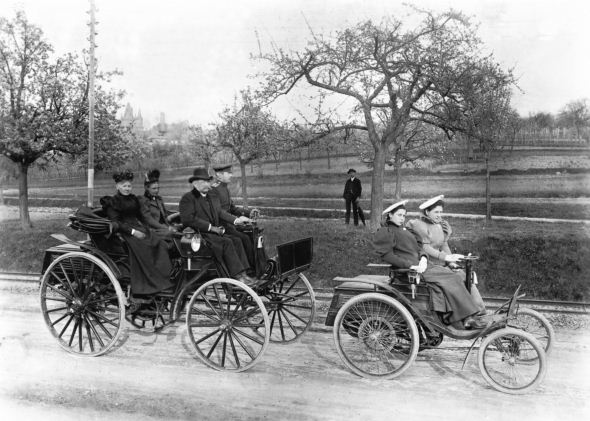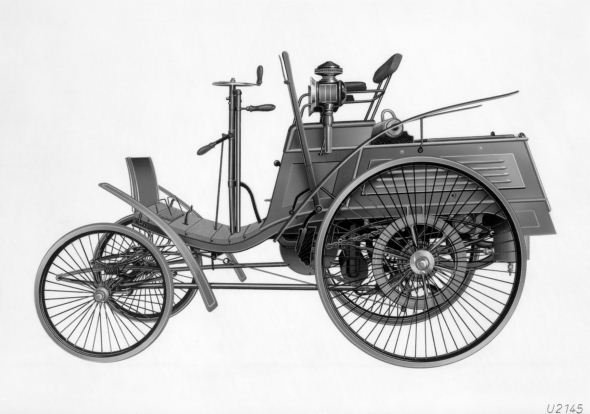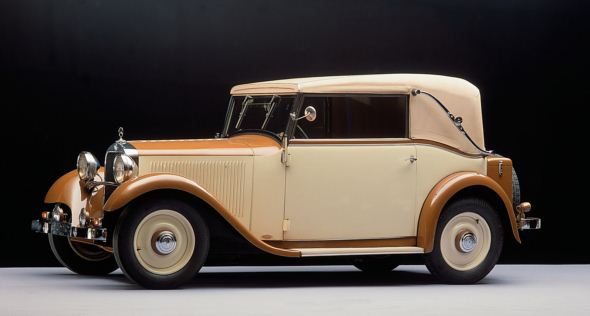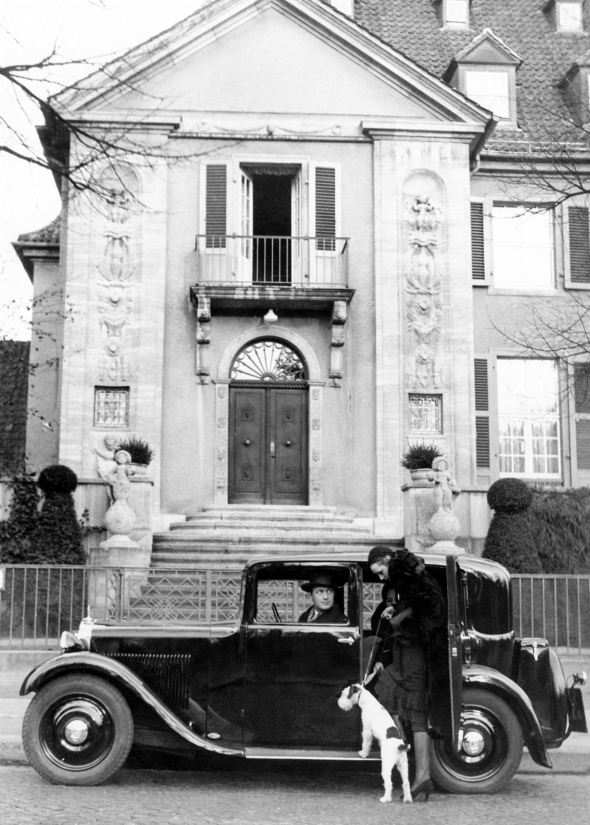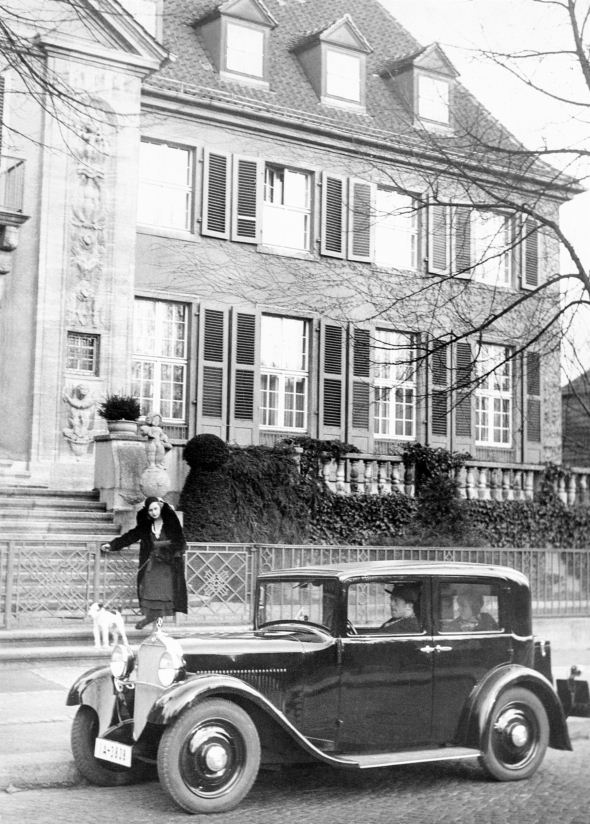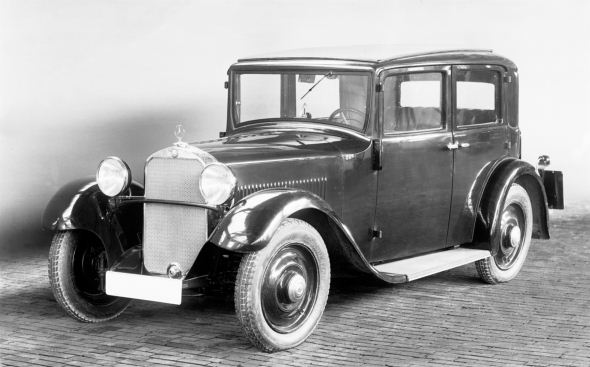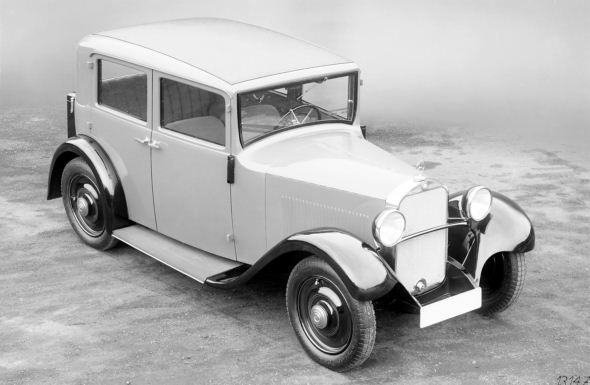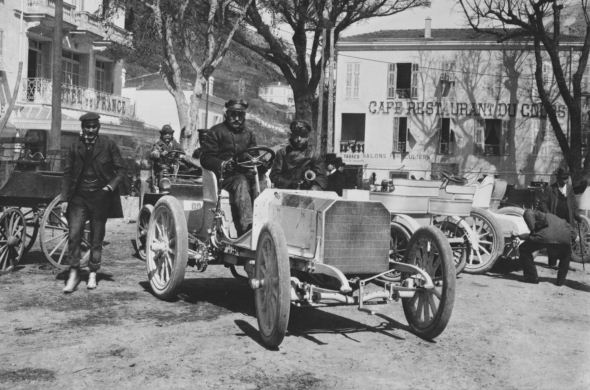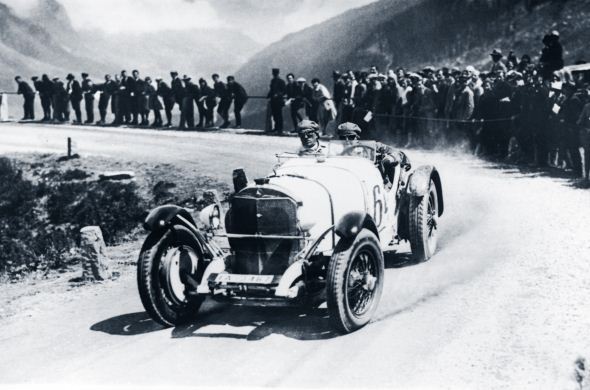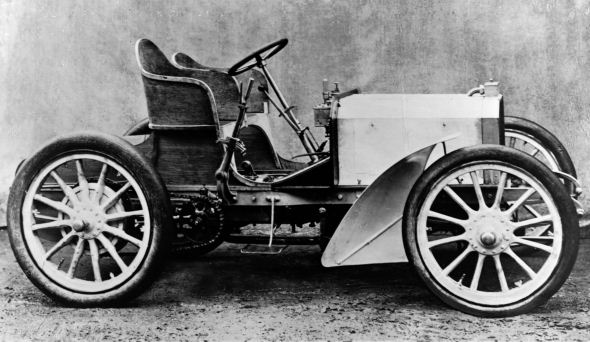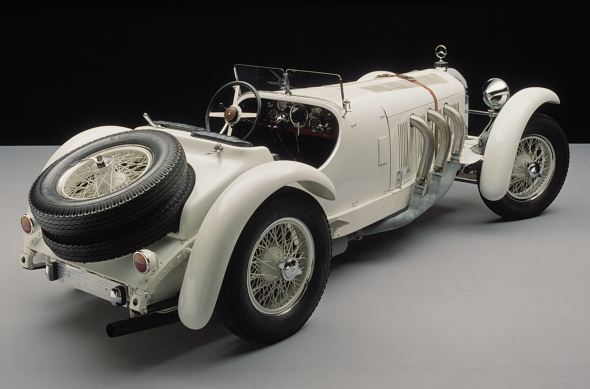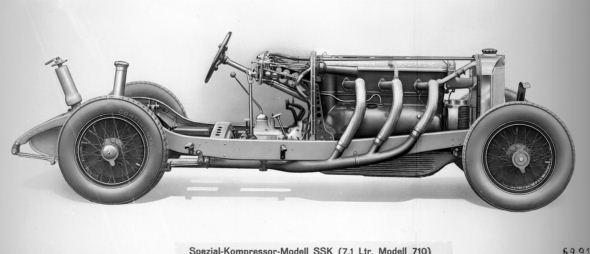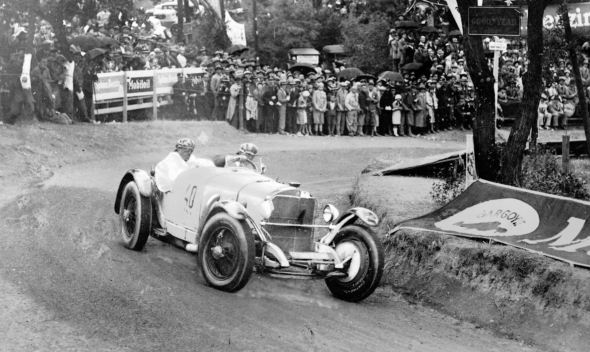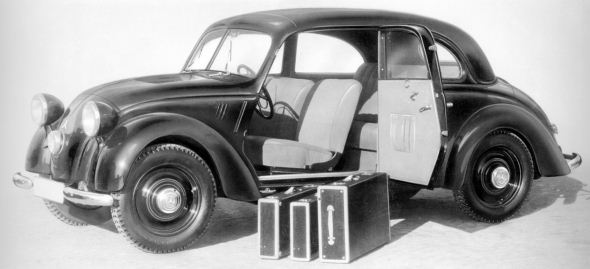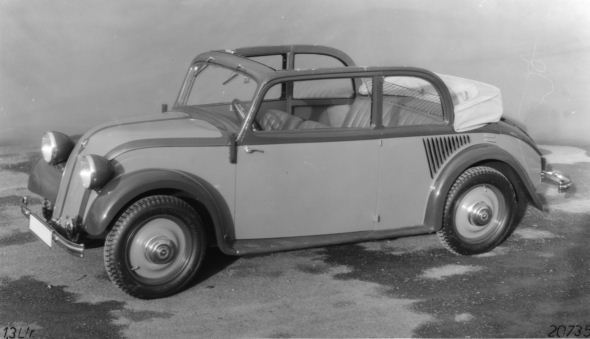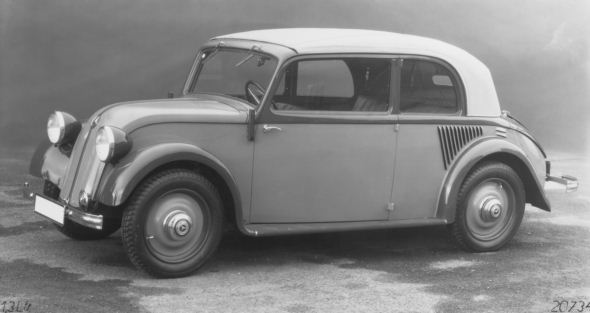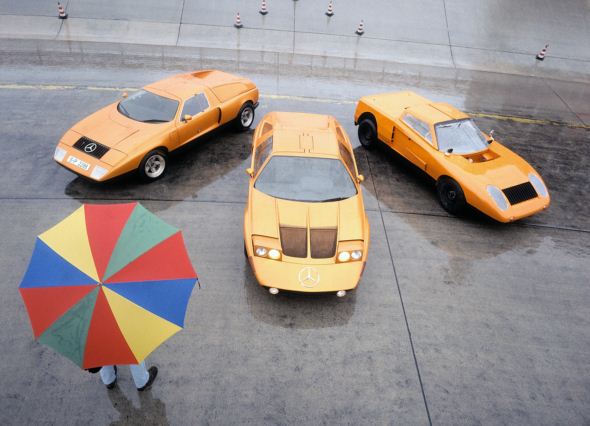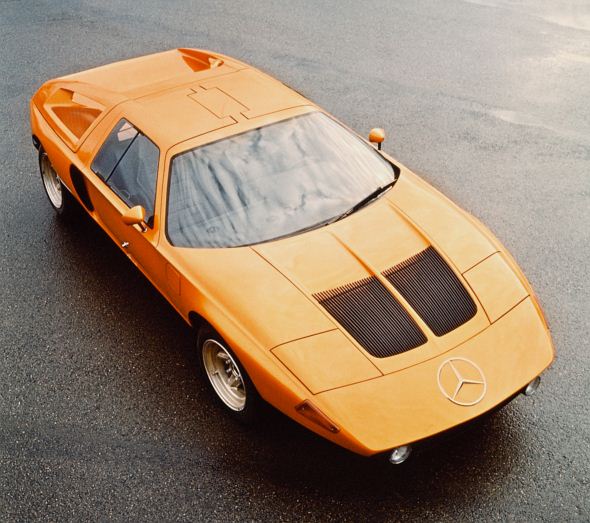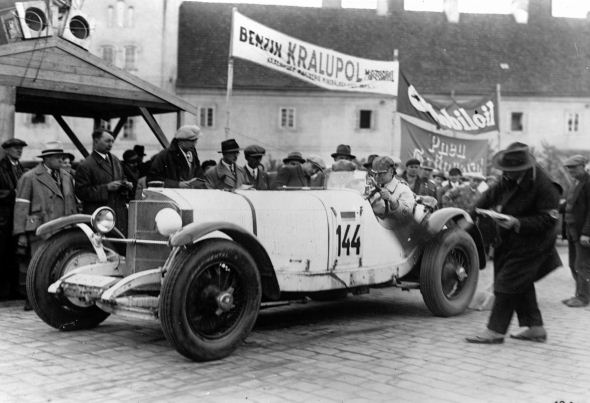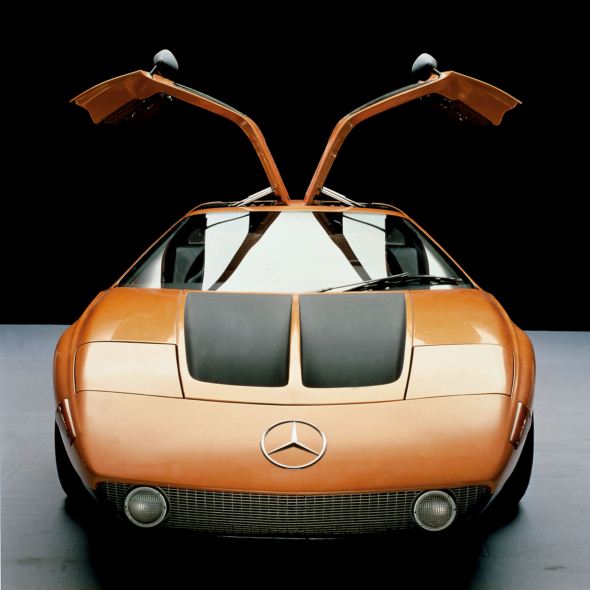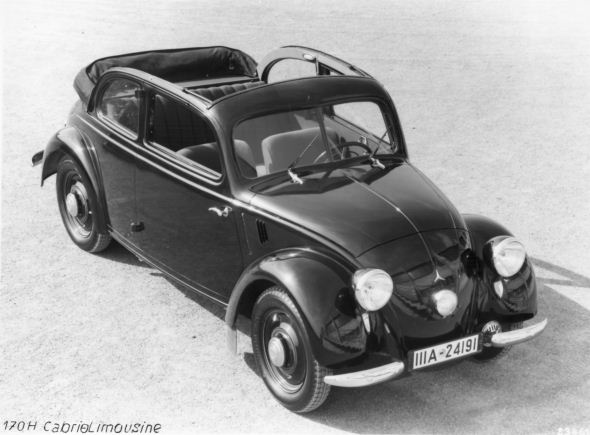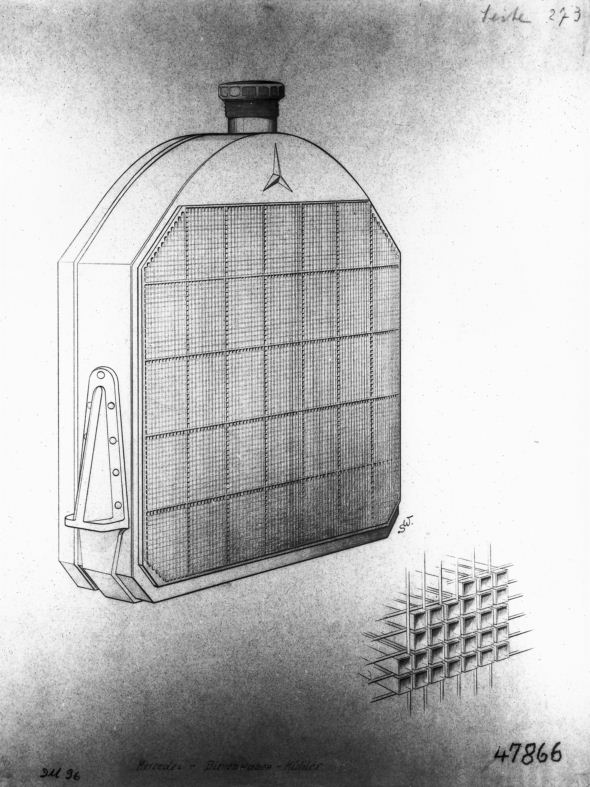Mercedes-Benz super-sports cars: an exclusive tradition
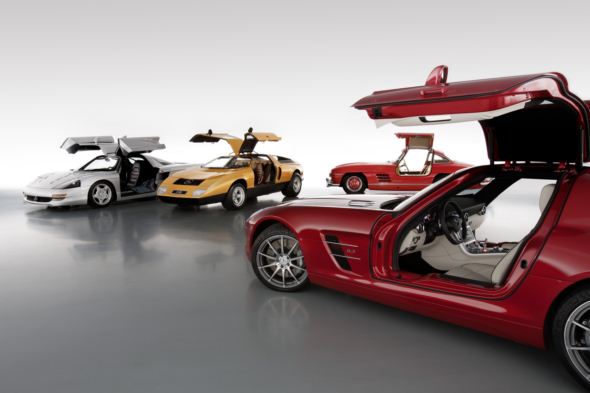
- Milestones in the history of the Mercedes-Benz brand
- Outstanding performance and marked technical affinity with the world of motorsport
- A tradition of originality: the Mercedes-Benz SLS AMG
Stuttgart – Super-sports cars are the nec plus ultra of automotive technology, as the most powerful and innovative vehicles of their day. Rather than being designed primarily for racing purposes, however, these models are marketed as exclusive cars to be driven on the road. Mercedes-Benz continues to set the standard with top-performing vehicles for its customers, inspiring and nurturing a passion among car enthusiasts for this unique domain of automotive culture.
Yet Mercedes-Benz super-sports cars are also an integral part of an unparalleled brand tradition. Their origins can be traced back to the very first Mercedes, which made motor-racing history in 1901. The line then continues down through a succession of iconic automobiles to the Mercedes-Benz SLS AMG, introduced in 2010 as the heir of this proud tradition.
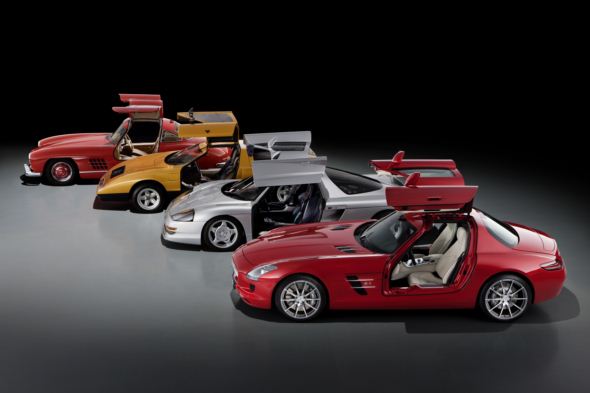
This family of super-sports cars includes the Mercedes-Benz SSK (1928 to 1932, W 06) and the Mercedes-Benz 300 SL (1954 to 1957, W 198). More recent examples are the Mercedes-Benz CLK-GTR (C 297) from 1997 and the Mercedes-Benz CLK DTM AMG, launched in 2004, along with the Mercedes-Benz SLR McLaren (C 199) introduced in the super-sports car segment in that same year.
All these cars featured were characterised by outstanding performance for their time and the use of near-racing automotive technology. Super-sports car designers draw their inspiration from the racing cars of their time, along with the latest results from research and laboratory testing. The result is “limited editions” of exciting and exclusive cars with outstanding sports performance qualities – genuine originals, also defined by being largely handbuilt.
The ability to create the right balance between competition on the racetrack and sporty performance on the road has always been among the virtues of this vehicle category. Mercedes-Benz super-sports cars have certainly notched up a long list of motor-racing successes over the years. The Mercedes 35 hp and its direct successors and the Mercedes-Benz SSK in particular were both sold as powerful cars for performance-focused drivers on the road and used as successful racing cars in their day.
Along with these super-sports cars, the history of Mercedes-Benz also features a succession of near-production concept and experimental cars that never went into series production. Examples include the legendary family of C 111 models with rotary engines in 1969 and 1970, and the C 112 in 1991.
The genes of Mercedes-Benz super-sports cars have also benefited from a succession of record-breaking cars and racing prototypes, such as the W 194 racing coupé prototype built in 1953, and the “Uhlenhaut Coupé” version of the 300 SLR racing car (W 196 S).
Dawn of an era: the Mercedes 35 hp
- Powerful drive system perfectly matched with chassis
- Successful racing car and exclusive road vehicle
- Succeeded by Mercedes-Simplex models
The first modern car was designed by Wilhelm Maybach, chief designer of Daimler-Motoren-Gesellschaft (DMG), in 1900. The state-of-the-art 1000-kilogram car with a characteristic low centre of gravity was made for Emil Jellinek, as the first vehicle to bear the “Mercedes” name. Standout features of the new car included the visionary contours, marking the final break from coach construction, and the powerful drivetrain. The Mercedes was propelled by a completely new 27-kW light-alloy engine, cooled by Maybach’s new honeycomb radiator. These ingredients combined to make the 35 hp the first super-sports car in the history of our brand, at least when fitted out as such, since the car was supplied in a range of body styles according to customer preference, as was normal practice at the time.
The car’s top speed was 75 km/h, or just under 90 km/h with the light sports body. These figures were superior to any other vehicle of the day – and the DMG 35 hp Mercedes proceeded to dominate the Racing Week event in Nice, winning the hill climb, street race and
one-mile sprint titles.
Wilhelm Maybach’s design also created the culture of Mercedes-Benz super-sports cars, since as well as being a highly successful racing car, the vehicle was also sold as an exclusive car for customers looking for a superior sports car. Emil Jellinek clearly had such ambitions when he commissioned this outstanding car from DMG. He had been operating in Nice on the Côte d’Azur as an independent car dealer since 1897, selling Daimler automobiles to the rich and famous. His customers included members of the Rothschild family and other VIPs of the day. By the time of Gottlieb Daimler’s death in 1900, Jellinek had sold 34 cars in this way – a respectable figure in an age of very low production runs.
Jellinek finally convinced Gottlieb Daimler and Wilhelm Maybach to build him a powerful car. The new DMG vehicle was to enter the Nice races under the name of “Mercedes”. Jellinek and his team had entered races under this pseudonym since 1899. Even then, he realised that, as well as being powerful advertising tools for their manufacturer, high-performance sports cars also provided a foretaste of series-production cars of the future: “I want the car of tomorrow!”, he told the DMG engineers. He placed a bulk order for 36 cars for a total price of 550,000 Mark.
The first new 35-hp car was delivered to Jellinek on 22 December 1900, and already on 4 January 1901 there was a report in the Côte d’Azur car magazine “L’Automobile-Revue du Littoral” reading as follows: “The place to see the latest trends at the moment is not Paris, but Nice. The first Mercedes car built in the workshops at Cannstadt has just arrived in Nice, and thanks to the kindness of its owner, Mr Jellinek, all our motorists have been able to try it out. We make no bones about it: the Mercedes appears to be a very, very good car. This remarkable vehicle will be a fearsome competitor in the 1901 racing season.”
These words were borne out in no uncertain terms during the Nice Racing Week in March 1901. The new Mercedes returned home with four first places and five second places to their credit, in such diverse events as the endurance race, the hill climb and the one-mile race. After watching these successes, Paul Meyan, General Secretary of the Automobile Club de France, coined the phrase “Nous sommes entrés dans l’ère Mercédès” (“We have just entered the Mercedes era”).
Maybach’s conviction that there would soon be customers for the exclusive high-performance sports car was proved right, with a list of buyers for the DMG Mercedes during 1901 including a string of American billionaires: Rockefeller, Astor, Morgan and Taylor.
The Mercedes 35 hp marks the beginning of a creative process that led to the production of numerous powerful and exclusive cars over the next few years, particularly the the models in the Simplex family. These were the fruit of Wilhelm Maybach’s tireless efforts to produce an even better successor for the first generation of Mercedes models. This project started in autumn 1901 and resulted in the top model of the 1902 year: the Mercedes-Simplex 40 hp. This car dominated the Nice Racing Week in April 1902 just as the first Mercedes had done one year before.
The next development stage of the race-winning super-sports car was the Mercedes-Simplex 60 hp of 1903. This vehicle enjoyed its hour of stardom as a racing car, but only as the result of a disastrous accident. In 1903, the Daimler factory in Cannstatt was largely destroyed in a fire. The casualties included the three Mercedes 90 hp cars to be raced in the Gordon Bennett race. So DMG decided to replace its factory racing vehicles with Mercedes-Simplex 60 hp cars, which the manufacturer borrowed back for the race from customers who had already received cars. One of these cars was driven to victory against very strong international competition by the Belgian racing driver Camille Jenatzy. So it was that the Mercedes-Simplex 60 hp came to stand for one of the most legendary motorsport successes of the Mercedes brand.
Other outstanding DMG models that can be regarded as forerunners preparing the way for contemporary super-sports cars include the
six-cylinder Mercedes 75 hp (1906), the Mercedes 37/90 hp featuring three-valve technology, double ignition and encapsulated drive chains (1911), and the Mercedes 28/95 hp, powered by a six-cylinder engine inspired by aircraft technology, with overhead camshaft, V-shaped overhead valves and steel turned cylinders (1914).
Benz & Cie., a competitor of DMG up until the merger of the two companies in 1926, also made a little piece of super-sports car history in 1909 with a very famous car: the Benz 200 hp, which as the “Blitzen-Benz“ (or “Lightning Benz”) set numerous records and entered the technology history books as the fastest car of its time. It had a 21.5-litre engine developing an output of 147 kW, and definitely belongs in the ranks of the super-sports cars. In contrast with the experimental cars and “record-breaking cars” of later years, the Benz 200 hp was both sold to customers and entered in motorsport events.
Mercedes 35 hp
In production: from 1900 to 1902
Engine: 4-cylinder, in-line
Displacement: 5913 cc
Output: 26 kW at 1000 rpm
Top speed: 75 km/h
Mercedes-Simplex 40 hp
In production: from 1902 to 1903
Engine: 4-cylinder, in-line
Displacement: 6785 cc
Output: 29 kW at 1100 rpm
Top speed: 80 km/h
Mercedes 75 hp
In production: from 1906 to 1911 (including successor models)
Engine: 6-cylinder, in-line
Displacement: 10,180 cc
Output: 55 kW at 1300 rpm
Top speed: 95 km/h
Mercedes 37/90 hp
In production: from1911 to 1915 (including successor types)
Engine: 4-cylinder, in-line
Displacement: 9,530 cc
Output: 66 kW at 1300 rpm
Top speed: 115 km/h
Mercedes 28/95 hp
In production: 1914 to 1924 (all models)
Engine: 6-cylinder, in-line
Displacement: 7280 cc
Output: 69 kW at 1800 rpm
Top speed: 130 km/h
“Super-sport short”: a sports performer among the “white elephants”
- Racing technology on public roads
- 7.1-litre engine with Kompressor supercharger delivering up to 184 kW
- Outstanding success in the motorsport arena
The integral connection for Mercedes-Benz between motor racing and exclusive vehicles for the customer was still in evidence in the late 1920s. A good example is the Mercedes 24/100/140 hp model K, launched in 1926. Its top speed of 155 km/h made it the world’s fastest touring car, and it was also entered for motorsport events. “K” stood for “kurz”, the German word for “short”, since this high-performance sports car with a supercharged Kompressor engine had a shortened version of the 24/100/140 hp model chassis.
Soon afterwards, a whole family of special Kompressor sports cars was launched on the market, comprising the S, SS, SSK and SSKL models. The most sophisticated of all these racers also sold to customers was the SSK, presented in 1928.
The exclusive lineage of this super-sports car is clear even from its name, since SSK stands for the “super-sports short” in German. The SSK was a logical extension of the “S” model from 1927 and the SS (standing for “short” and “super-short”, respectively). Both of these models were already outstanding examples of exclusive and high-performance sports cars, but the SSK took these attributes to a whole new level.
Like the SS, it was propelled by a new 7.1-litre engine (with the
in-house code M 06) with a mechanical supercharger. Power ratings rose from 147 kW at the start of the production period to 184 kW in the vehicle’s most sophisticated development stage. The SSK was designed for maximum manoeuvrability, with a shorter wheelbase than the SS (2950 millimetres rather than 3400 millimetres), and a correspondingly shorter chassis.
Technical innovations introduced in 1928 included wet cylinder bushes, which allowed the cylinder bore to be increased to 100 millimetres, bringing the displacement to 7.1 litres. Then crankshaft with four main bearings was fitted with an oscillation damper, and power was increased with a racing camshaft for racing purposes. A further power boost was provided with a Kompressor supercharger activated when the accelerator pedal was pressed right down to the floor. As a special option, it was also possible to order a Kompressor with larger vanes for even higher engine power. Private motorists could also order racing Kompressor devices and camshafts for their SSK.
Mercedes-Benz S, SS and SSK Kompressor cars notched up many victories in motor races, with the SSK proving particularly successful. In 1929, racing driver Rudolf Caracciola was the overall winner of both the Prague mountain race from Zbraslav to Jiloviste and the International Tourist Trophy in Ireland in a Mercedes-Benz SSK. In that same year, August Momberger and Max Arco-Zinneberg won the Grand Prix des Nations on the Nürburgring track in the class for the over three-litre displacement sports car category.
Caracciola then became the European sports car hill climb champion for the 1930 season in a Mercedes-Benz SSK. In 1931, the
Mercedes-Benz engineers created a purely racing version of the SSK super- sports car, also known as the SSKL (super-sports short light). It was at the wheel of an SSKL that Caracciola won the Italian “Mille Miglia” long-distance race from Brescia to Rome and back in spring 1931 – the first non-Italian to achieve this feat.
As well as being raced by the works team, the Mercedes-Benz SSK was entered in many events by private drivers, with considerable success. This clearly validated the concept of designing a super-sports car that would also be competitive on the racetrack. However, not all customers buying an SSK intended to race the vehicle. Some wealthy clients wanting sports quality performance ordered the ex factory chassis with a cabriolet body, so they could enjoy driving their SSK as a fast sports car on the road.
According to the official factory records, a total of 33 cars of the legendary SSK and SSKL models were built from 1928 to 1932, twenty of them in 1929 alone. While the SSKL was never available to private customers, the SSK remained officially available through until February 1933. After that time, it no longer appears in the
Mercedes-Benz price list.
Mercedes 24/100/140 hp model K
In production: 1926 to 1929 (including successor models)
Units produced: 150 (including successor models)
Engine: 6-cylinder, in-line
Displacement: 6240 cc
Output: with Kompressor supercharger, 118 kW at 3100 rpm
Top speed: 155 km/h
Mercedes-Benz 26/120/180 hp model S
In production: 1927 to 1928
Units produced: 146
Engine: 6-cylinder, in-line
Displacement: 6800 cc
Output: with Kompressor supercharger, 132 kW at 3000 rpm
Top speed: 160 km/h
Mercedes-Benz 27/140/200 PS model SS (W 06)
In production: 1928 to 1933
Units produced: 111 (all engine variants)
Engine: 6-cylinder, in-line
Displacement: 7065 cc
Output: with Kompressor supercharger,147 kW at 3300 rpm
Top speed: 170 km/h
Mercedes-Benz SSK (W 06)
In production: 1928 to 1932
Units produced: 33 (including SSKL)
Engine: 6-cylinder, in-line
Displacement: 7065 cc
Output: up to 184 kW
Top speed: up to 192 km/h
Mercedes-Benz super-sports cars from AMG
- 1997: racing technology hits the road with the CLK-GTR
- 2004 CLK DTM AMG also based on a purebred racing design
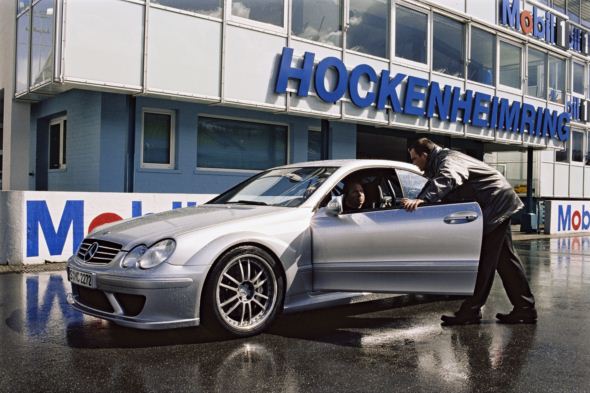
The Mercedes-Benz SLS AMG, as the latest Mercedes-Benz contribution to super-sports car history, harks back to a very special tradition of high-powered automobiles over the last four decades: the AMG era. The successful collaboration now operating as Mercedes-AMG GmbH had also created two previous super-sports cars: the Mercedes-Benz CLK-GTR and Mercedes-Benz CLK DTM AMG.
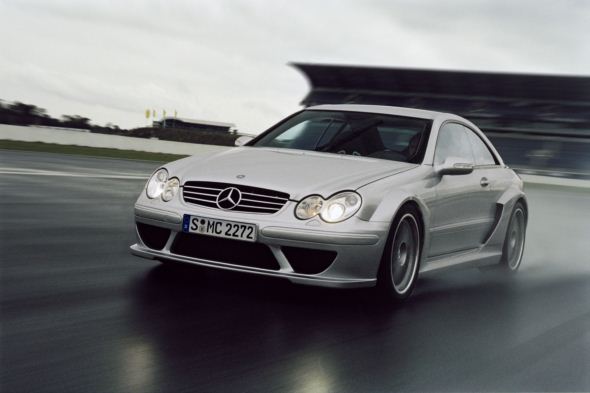
AMG was founded in 1967 by Hans Werner Aufrecht and Erhard Melcher, establishing a reputation as a pioneer in the motorsport and vehicle tuning sectors. After signing a cooperation agreement with Daimler-Benz AG in 1990, AMG became increasingly integrated with what was then DaimlerChrysler AG in the years from 1999. Its acquisition as a wholly owned subsidiary took place on 1 January 2005.
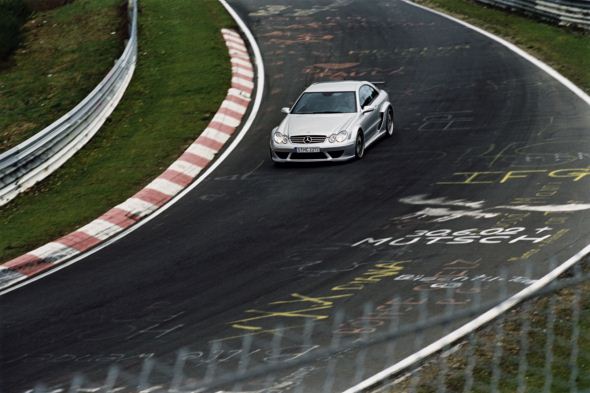
The collaboration has resulted in a number of racing sports cars and high-performance models, with many examples of cross-fertilisation between the two areas of AMG’s activity. For example, Team AMG 1997 won the FIA GT championship in 1997 with the Mercedes-Benz CLK-GTR racing sport prototype, and AMG then produced a road-registered model based on the racer – the Mercedes-Benz CLK-GTR super-sports car, presented in April 1997. The coupé was equipped with a 6.9-litre V12 engine, developing 450 kW. Innovative details implemented by the engineers in this vehicle included the carbon fibre composite body. The super-sports car also came with air-conditioning, a hi-fi system and leather upholstery, in contrast with the racing vehicle designed exclusively for power and handling attributes.
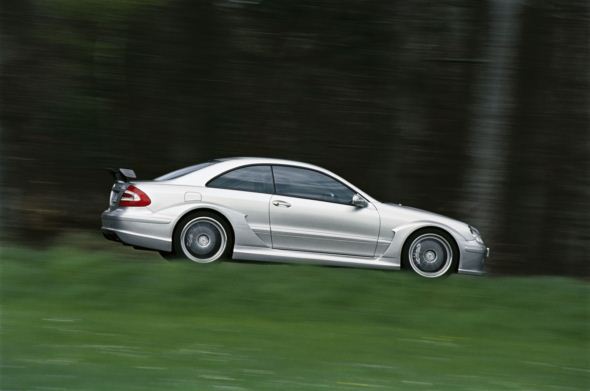
Yet the CLK-GTR remains true to its racing lineage at all times: the super-sports car delivers outstanding driving performance ratings, and the compact cockpit provides an authentic racing feel for both driver and passenger. This vehicle highlights all of AMG’s skills and experience in technology transfer from sports racing to sophisticated production cars with outstanding sports performance. A total of 25 CLK-GTR cars were made.
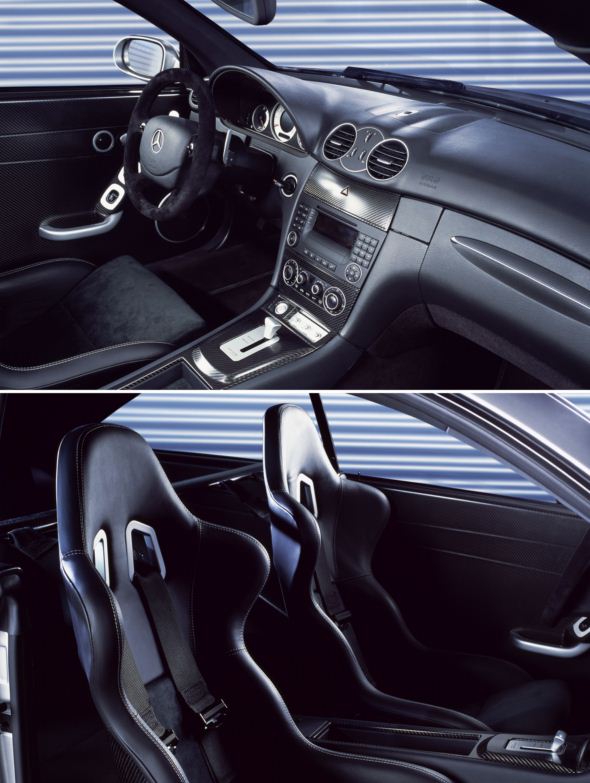
AMG repeated the feat of transferring purebred racing technology onto the public roads in 2004, with the Mercedes-Benz CLK DTM AMG. As before, the road driving model is derived from one of the most successful racing cars of its time, the racing version of the Mercedes-Benz CLK. This is the car that gave Bernd Schneider the German Touring Cars (DTM) championship title in 2003.
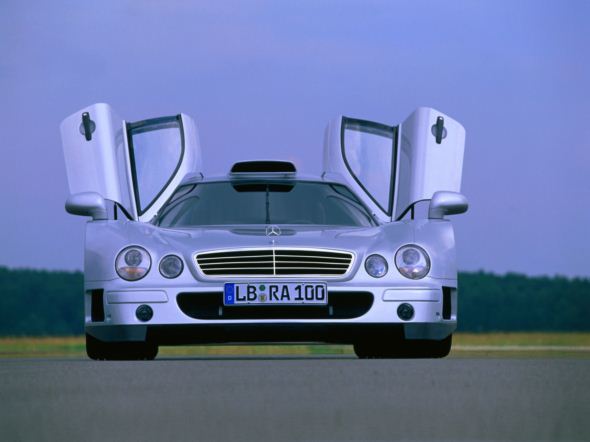
The production version of the vehicle has a 428-kW AMG 5.5-litre V8 Kompressor engine, along with a new chassis design, optional sports tyres and aerodynamics optimised in the wind tunnel. The new
super-sports car accelerates from zero to 100 km/h in just 3.9 seconds, with a top speed electronically controlled at 320 km/h.
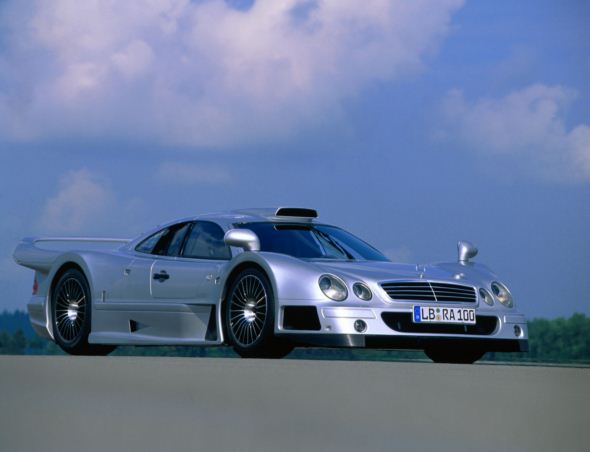
The interior features two leather-upholstered AMG sport bucket seats with four-point safety belts, an oval AMG racing deerskin-upholstered steering-wheel, and the AMG instrumental panel with speedometer reading up to 360 km/h. The production run of the Mercedes-Benz CLK DTM AMG was limited to 100 units.
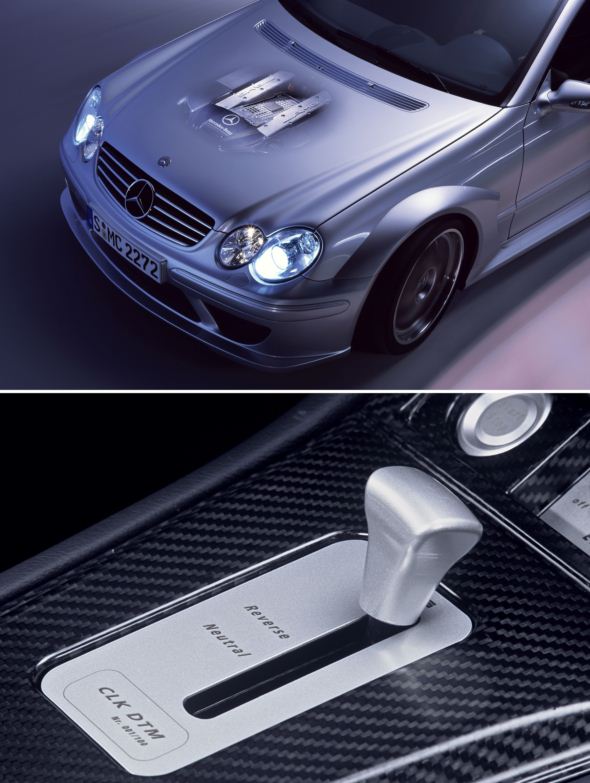
AMG is now established as the performance brand within Mercedes-Benz Cars. Other standout high-performance vehicles in the AMG range since 2006 include the “Black Series” models, where AMG has been totally committed to its motto of “technology transfer from purebred motorsport”. This family of top performers so far includes the Mercedes-Benz SLK 55 AMG Black Series (2006), Mercedes-Benz CLK 63 AMG Black Series (2007) and Mercedes-Benz SL 65 AMG Black Series (2008), AMG’s most powerful car at that time at 493 kW.
Another high-performance sports car launched in the same year as the CLK DTM AMG was the Mercedes-Benz SLR McLaren. First unveiled in 1999 at the Detroit Motor Show as the Vision SLR, it incorporates numerous innovations and features carried over from the Formula 1 vehicle. Standout features include the distinctive front end with its arrow-shaped tip and the characteristic double wing. Examples of functional refinements are the carbon-fibre body, ceramic brake disks and pneumatic brakes.
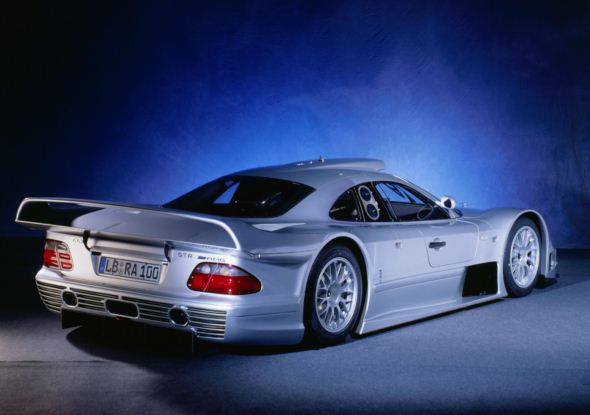
The Vision SLR proved such a sensation that it was decided to put the vehicle into series production. The first Mercedes-Benz SLR cars for sale to customers arrived on the market in 2004. Their AMG Kompressor engine developed 460 kW, for a top speed of around 334 km/h. The open-top version followed in 2007, and there were also two special models with engine power ratings boosted to 478 kW, the SLR 722 from 2006 and the SLR Stirling Moss from 2008. Production of the SLR McLaren ended in 2004.

Mercedes-Benz CLK-GTR (C 297)
In production: 1997
Units produced: 25
Engine: 12-cylinder, V arrangement
Displacement: 6898 cc
Power: 450 kW
Top speed: 320 km/h
Mercedes-Benz CLK DTM AMG
In production: 2004
Units produced: 100
Engine: 8-cylinder, V arrangement
Displacement: 5439 cc
Power: 428 kW
Top speed: 320 km/h
Mercedes-Benz Vision SLR
In production: 1999
Units produced: 1
Engine: 8-cylinder, V arrangement
Displacement: 5496 cc
Power: 410 kW at 6500 rpm
Top speed: 320 km/h
Mercedes-Benz SLR McLaren (C 199)
In production: 2004 to 2009
Engine: 8-cylinder, V arrangement
Displacement: 5439 cc
Power: 460 kW at 6500 rpm
Top speed: 334 km/h
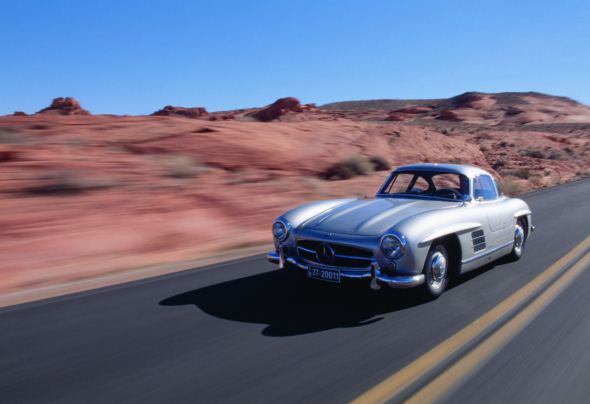
Mercedes-Benz 300 SL: an icon with racing genes
- Gullwing selected as “sports car of the century”
- Design a timeless blend of elegance and dynamism
- Successor rotary engine C 111 model remains an experimental vehicle
The “Gullwing” era began in 1952, when the Mercedes-Benz W 194 racing coupé notched up victory after victory. An enhanced version followed in 1953, with a petrol-injection engine delivering an extra 29 kW, bringing the power rating up to 158 kW. The transaxle design provided a more favourable weight distribution and better vehicle dynamics. The sharp corners of the front of the vehicle earned it the in‑house nickname of “Hobel” (or “plane“). This unique model was never raced, since all available capacity was diverted to the company’s entry into Formula 1 planned for 1954, but the car was a significant milestone on the path towards the 300 SL production sports car. And incidentally, the prototype with its transaxle construction also forms a parallel with the Mercedes-Benz SLS AMG.
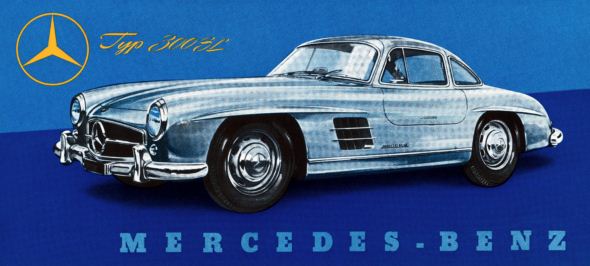
The Mercedes-Benz 300 SL (W 198) production “Gullwing” model was clearly a close relation of these racing vehicles, since it took the engineers just one-and-a-half years to create the new design on the basis of the W 194 racing sports car. This was the first true production sports car to be developed by Mercedes-Benz following the Second World War. The design project was started in September 1953, in response to requests from Maximilian Hoffman, Mercedes-Benz’s importer in the USA. The 300 SL was first presented to the public at the International Motor Sports Show in New York in February 1954.
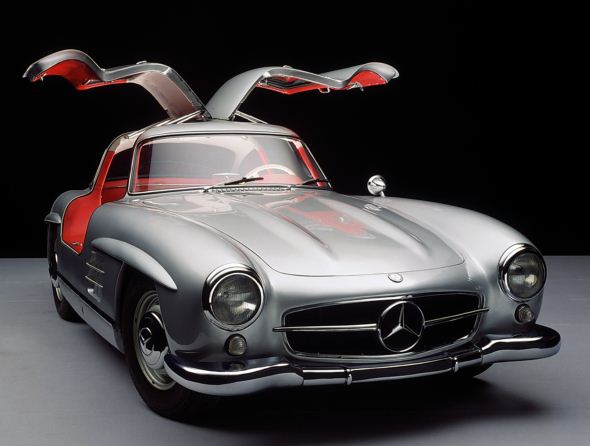
The signs of the coupé’s allegiance to the racing sports car are clearly evident, from the ultra-light tubular lattice frame to the distinctive body contours and the “gullwing” doors, perpetuated in the popular name of the car in English-speaking countries. The decision to use this unusual form of access, more characteristic of racing-car designs, was no gimmick designed to grab public attention, however. The doors hinged on the car roof were a purely structural requirement, since the lattice frame carried over from the racing SL did not allow the use of conventional front-hinged doors.
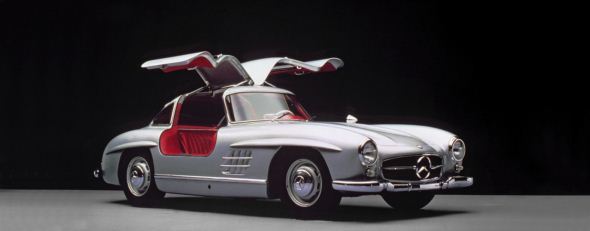
Instead of the M 194 six-cylinder in-line carburettor engine with a displacement of three litres and 129 kW power rating, the W 198 model series had the 158-kW M 198 engine with mechanically controlled direct injection. This was the first Mercedes-Benz production vehicle to be fitted with a petrol-injection engine, which delivered 29 kW more power than the carburettor-based racing version of the engine.
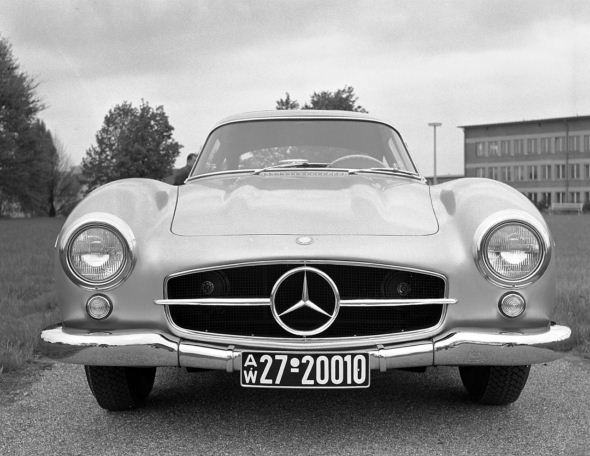
The engine was set at an angle, resulting in a particularly flat front end with outstanding air-flow characteristics. The consistent focus on a lightweight structure helped to provide some extremely impressive performance characteristics, with top speeds of up to 250 km/h, according to the rear axle ratio. The chassis was essentially based on the 300 model saloon (W 186), but with suspension settings more focused on sporty performance qualities.

The appearance of the super-sports car has been refined to create a more elegant and dynamic look in comparison with the racing sports vehicle. The visual design qualities and concessions to passenger comfort did not, however, limit the car’s performance qualities. The 300 SL duly continued the motorsport tradition of its namesake, with top placings in many competition events. These included winning its class in the 1955 Mille Miglia race, and in that same year Olivier Gendebien and Pierre Stasse drove a Mercedes-Benz 300 SL to victory in the Liège–Rome–Liège rally.
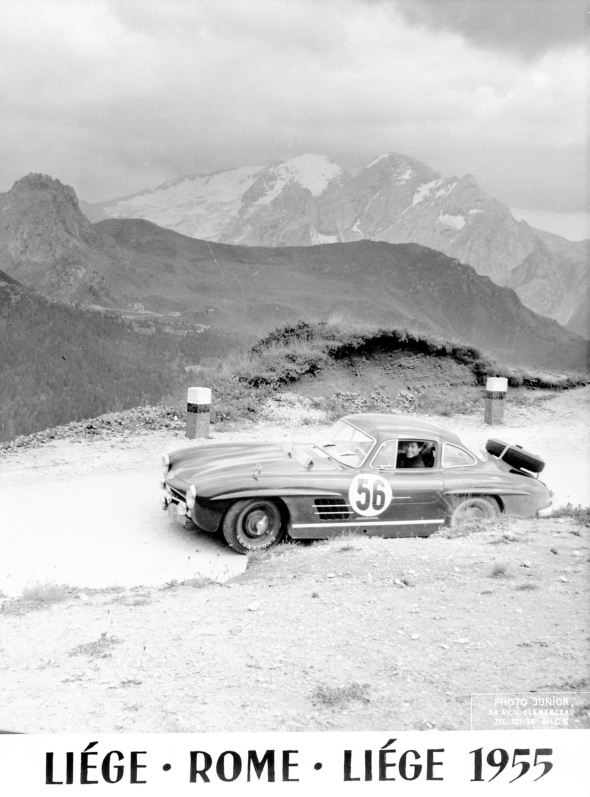
The car also delivered championship titles for three drivers in Europe and America: Werner Engel won the European touring cars championship in 1955, and Walter Schock in 1956. And in the USA, Paul O’Shea won the category D American sports car championship in 1955 and 1956, finishing well ahead in the ratings.
Some 1400 units of the Mercedes-Benz 300 SL were built at Sindelfingen from August 1954 to May 1957, including 29 cars with a light-alloy body, and even one experimental car with a plastic body.
In 1955, the company also built two coupé versions of the Mercedes-Benz 300 SLR (W 196 R) racing sports car. These were specifically designed for long-distance races, to provide somewhat more comfortable conditions for the driver than in the open version. Externally, the car looked similar to the 300 SL, but with purebred Formula 1 technology under the bonnet. These cars did not find their way into any customers’ hands, but one fortunate individual was able to enjoy the attributes of the Mercedes-Benz 300 SLR: its designer, Rudolf Uhlenhaut.

On the cancellation of the sixth Carrera Panamericana race in 1955, in which the coupé was to be used for the first time, and since Daimler-Benz AG withdrew from racing at the end of that season, Uhlenhaut was allowed to drive one when travelling on business – and he made extensive use of this privilege. Accordingly, the car has become known as the “Uhlenhaut Coupé”.
Many fans of the 300 SL expected Mercedes-Benz to unveil the C 111 as a foretaste of the next generation of a super-sports car with a star on the bonnet in 1969, at the International Motor Show in Frankfurt am Main. This breathtaking experimental vehicle was a lightning-fast, wedge-shaped car with gullwing doors, driven by a futuristic-looking rotary engine (Wankel engine).
Hopes of series production really started to rise for an enhanced version of the car, the C 111-II, which was unveiled just six months later at the Auto Show in Geneva, generating feverish enthusiasm among the automotive community. However, the vehicle with its super-sports car genes and 257-kW four-disk rotary engine was to remain a near-production concept study. Arguments against series production included the comparatively low efficiency of the engine and stricter exhaust regulations.
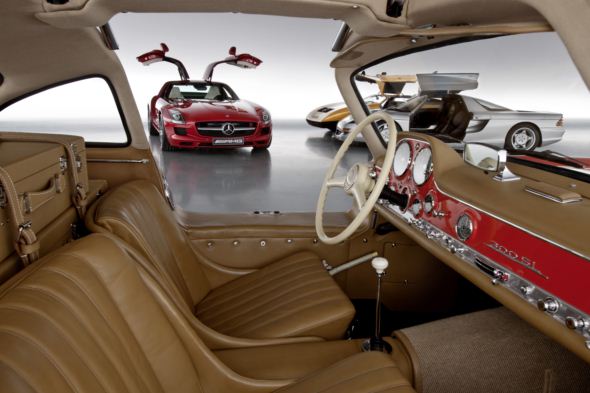
Similar reactions were prompted by the Mercedes-Benz C 112 in 1991. This amazing sports car concept study had a six-litre, twelve-cylinder engine delivering 300 kW. The C 112 anticipated some of the technical innovations that were to flow through to Mercedes-Benz series-produced vehicles over the next few years – including Active Body Control (ABC) and the DISTRONIC proximity control. The C 112 was influenced by the C 11 Mercedes-Benz racing sports car of the time, in which Jean-Louis Schlesser won the Group C sports car world championship for Mercedes-Benz in 1990.
Mercedes-Benz 300 SL racing sport prototype (W 194 011)
In production: 1953
Units produced: 1
Engine: 6-cylinder, in-line
Displacement: 2996 cc
Output: 158 kW at 5960 rpm
Top speed: 250 km/h
Mercedes-Benz 300 SL (W 198)
In production: 1954 to 1957
Units produced: 1400
Engine: 6-cylinder, in-line
Displacement: 2996 cc
Output: 158 kW
Top speed: up to 250 km/h
Mercedes-Benz 300 SLR “Uhlenhaut Coupé” (W 196 S)
In production: 1955
Units produced: 2
Engine: 8-cylinder, in-line
Displacement: 2982 cc
Output: 222 kW at 7500 rpm
Top speed: 290 km/h
Mercedes-Benz C 111-I
In production: 1969
Units produced: 5
Engine: 3 rotary pistons
Chamber volume: 1800 cc
Output: 206 kW at 7000 rpm
Top speed: 260 km/h
Mercedes-Benz C 111-II
In production: 1970
Units produced: 6
Engine: 4 rotary pistons
Chamber volume: 2400 cc
Output: 257 kW at 7000 rpm
Top speed: 300 km/h
Mercedes-Benz C 112
In production: 1991
Units produced: 1
Engine: 12-cylinder, V arrangement
Displacement: 5987 cc
Output: 300 kW at 5200 rpm
Top speed: 310 km/h
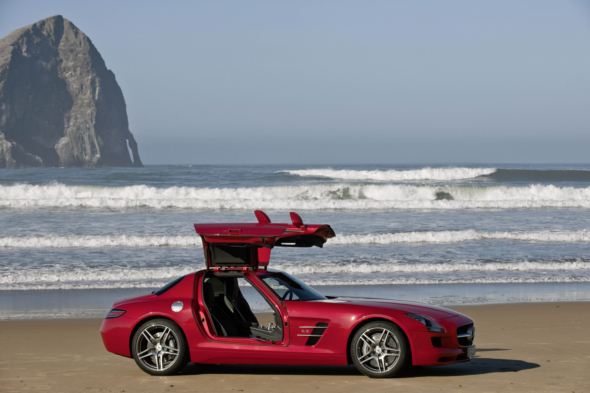
2010: the Mercedes-Benz SLS AMG
- Technical refinements taken directly from racing designs
- AMG’s first ever totally independently developed car
- Official F1™ Safety Car in Formula 1
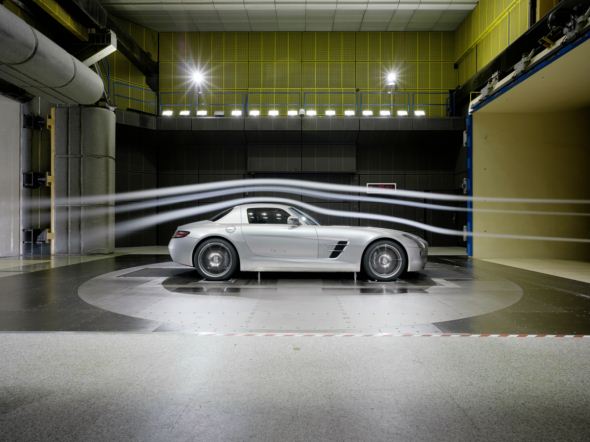
The Mercedes-Benz SLS AMG is part and parcel of the Mercedes-Benz tradition of super-sports cars. While not directly based on a specific contemporary racing model, the design features many technical details from racing technology. Examples include the “torque tube” between the engine and the rear axle, with a transaxle gearbox system: inside the tube is a carbon-fibre material shaft rotating at engine revolution speed, as used in the current Mercedes-Benz C‑Class racing touring car competing in the German Touring Car Masters championship. The car also has the 420-kW AMG 6.3-litre V8 engine and an aluminium space frame.
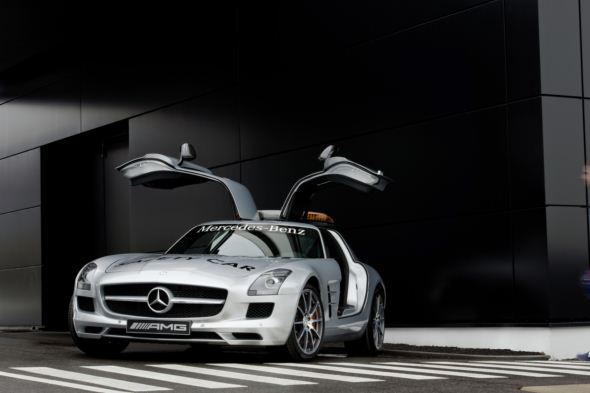
This super-sports car, with its swing-wing doors and lines after the style of the 300 SL, is the first car to be fully developed by AMG in the company’s history of over 40 years. As the performance brand within Mercedes-Benz Cars, the firm has successfully applied all its skills and experience to the development of high-performance cars on the basis of Mercedes-Benz models.
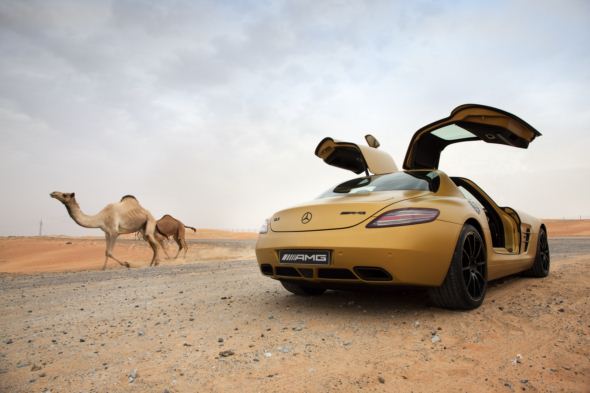
Production of the Mercedes-Benz SLS AMG (C 197) got under away at Sindelfingen in January 2010. Just a few weeks later, this extraordinary new vehicle established its claim to a place in the Mercedes-Benz super-sports car tradition by making its debut in the most exclusive of all motorsport event series: as from March 2010, the Mercedes-Benz SLS AMG has been the new official F1™ safety car. Its predecessor in this capacity in the 2008 and 2009 seasons had been the SL 63 AMG. The new Mercedes-Benz SLS AMG is the most powerful and exclusive safety car ever seen in Formula 1 racing.
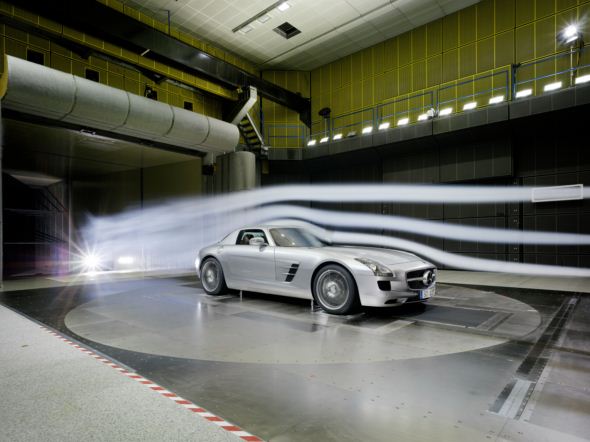
Meanwhile, the SLS AMG was also making its first appearance in the racing arena: at the end of March 2010, Mercedes-Benz unveiled the SLS AMG GT3 at Puebla in Mexico, as a purebred racing version of the super-sports car, with enhancements including a higher engine power rating.
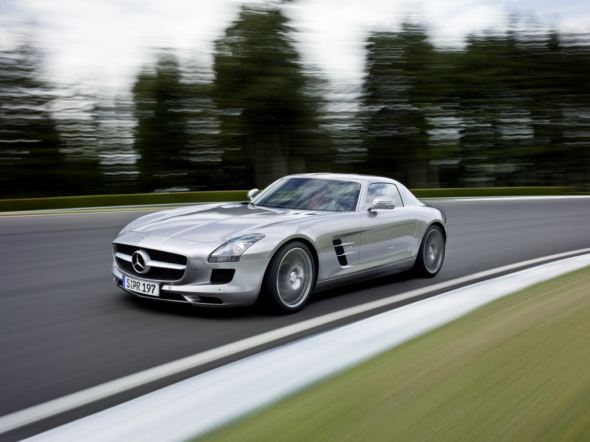
This sports car for sale to customers is designed to compete in both sprint and long-distance racing. The concept complies with the GT3 regulations of the FIA (International Automobile Federation), whose racing series for near-production GT vehicles has been gaining prominence all around the world in 2010. The SLS AMG GT3 differs from the production version in matters such as aerodynamic enhancements, roll bars and use of the HANS (head and neck support system) familiar from Formula 1.
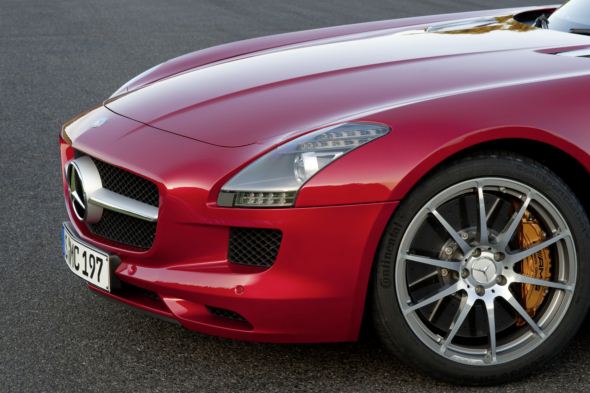
Mercedes-Benz SLS AMG (C 197)
In production: from 2010
Engine: 8-cylinder, V arrangement
Displacement: 6208 cc
Power: 420 kW
Top speed: 317 km/h
Compact and reasonably-priced: the smaller car in the history of Daimler AG
- A development story dating back to the earliest beginnings of the company
- Not every design becomes a series production vehicle
- The W 201 model series established the Mercedes-Benz compact class in 1982, and the A-Class took it a consistent step further in 1997
Stuttgart – The desire for vehicles with a compact exterior and at the same time the “inner values” of a high-quality interior has been a constant underlying theme throughout the entire history of Daimler AG and its predecessors. The Stuttgart-based company – whose own domains have traditionally comprised product segments occupied by the luxury and upper mid-range classes – has also enjoyed repeated success in applying its innovation and development expertise in the lower range segments for compact, reasonably-priced vehicles too.
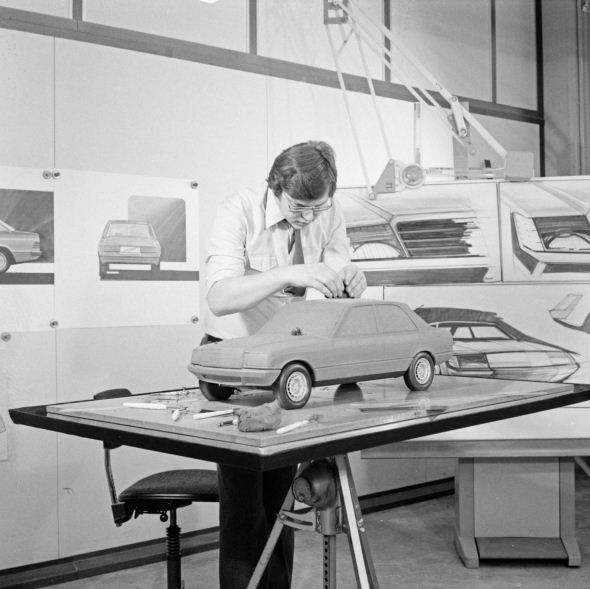
Not every example of the smaller passenger car on which the engineers and designers worked survived through to the production stage, however. This is down to a variety of different reasons which make telling this chapter in the story of the compact car all the more interesting.
Carl Benz, alongside Gottlieb Daimler, is not just the inventor of the automobile. In 1894 he also introduced the small, light “Velo” model: some 1200 units of this vehicle were produced, making it the first volume produced vehicle in automotive history.
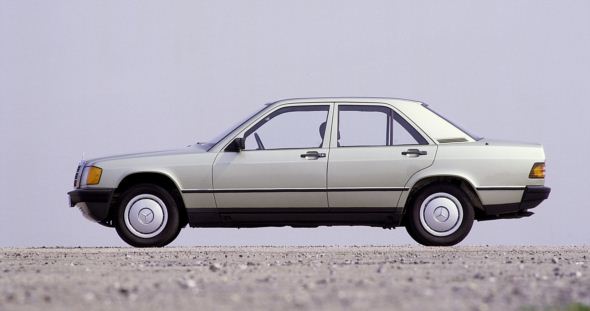
In 1911 Benz & Cie. then launched the 8/18 hp model, which was not only more reasonably priced than its predecessor, the 10/18 hp, but also represented an early example of “downsizing”. Compared for example with the Benz 18 hp of 1905, the four-cylinder model delivered the same output but with a displacement which was almost 40 percent less. The 8/18 hp model was therefore more efficient and also helped to save on tax – the luxury car tax introduced in 1906 was based on engine displacement.
At the start of the 1920’s, during the period after the First World War, the focus once again fell squarely on compact, reasonably-priced vehicles. As a result, the “Daimler-Motoren-Gesellschaft” (DMG) built the 6/25 hp supercharged passenger car, specifically designed as a compact and relatively reasonably-priced vehicle – yet the large-scale distribution of what was a technically sophisticated car failed to come about due to its price. A further attempt came in 1926 with the founding of Daimler-Benz AG, a company into which both Benz & Cie. and DMG were merged. This was a vehicle with a displacement of 1.4 litres, created in 1926 under the internal designation W 01. It was shelved, however, just like the 5/25 hp model which was produced as part of a trial series production run in 1928.
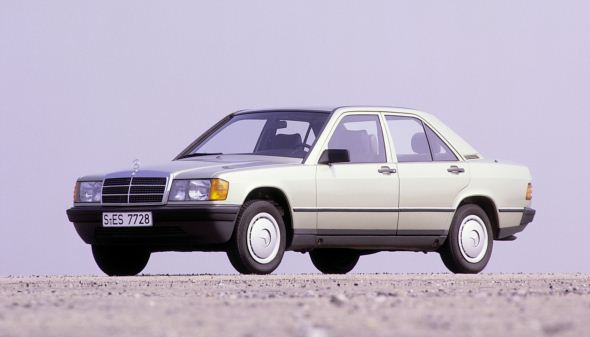
Nevertheless, success was with the 170 model (W 15), on the other hand. The inexpensive and technically innovative entry-level model celebrated its premiere in 1931 – and was a tremendous success in terms of sales. In fact the W 15 played a large part in ensuring Daimler-Benz successfully overcame the difficult economic times of the early 1930’s.
Even before the W 15 model series was introduced, the engineers and technicians at Daimler-Benz once again embarked on the task of developing an even more reasonably priced and compact entry-level model as part of the Mercedes-Benz passenger car range. The result was the rear-engined Mercedes-Benz 130 (W 23), introduced at the beginning of 1934. It was considered to have a groundbreaking, modern design; nevertheless, it was unable to establish itself in the market, no doubt partly due to its shape which was rather unusual for a Mercedes-Benz.
Two years later it was replaced by the 170 H model (W 28), which was more powerful and somewhat larger, but at the same time also more expensive. The role of entry-level model was now taken over by the front-engined Mercedes-Benz 170 V (W 136), which was introduced at the same time as the 170 H model as the successor to the 170 model (W 15). The 170 V model was able to build further on the success of its predecessor to rank among the Mercedes-Benz models produced in the greatest numbers during the period prior to 1945. Furthermore, it also formed the basis for the resumption of passenger car production after the Second World War.
Immediately after the War too, the company’s thoughts once again turned to producing smaller cars. Several vehicles were created, in some cases only on the drawing board, but some interesting configurations emerged. Things then became more definite in the 1950’s with the announcement of the W 122 and W 118/W 119 model series, which due to corporate policy reasons however were not launched on the market.
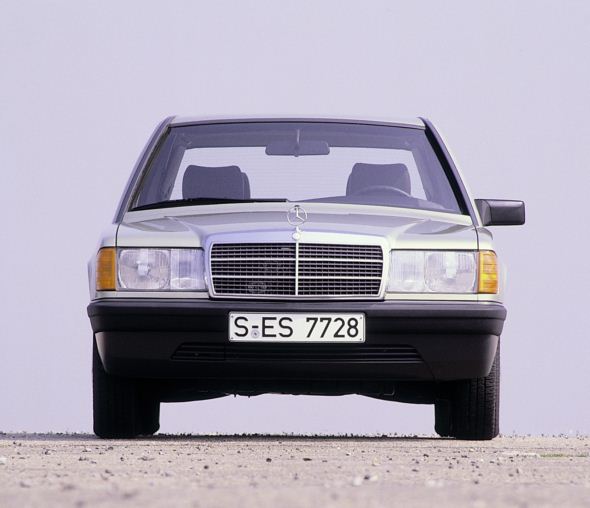
In 1982, following a long development history, all of the planning finally came to fruition with the introduction of the so-called Mercedes-Benz compact class (W 201 model series), which was initially available in the form of the 190 and 190 E models. It was credited with having established the smaller vehicle on the market, with all of the interior values of the brand. Since its second generation, the 202 model series introduced in 1993, the compact class has been known under the name C-Class, which has continued the great success story of the “190” model.
The line-up of smaller vehicles also includes the NAFA (from the German “Nahverkehrsfahrzeug”) short-distance vehicle of 1982, a groundbreaking concept based on a history of ideas which to some extent have been used in the two-seater smart car, now also a product of Daimler AG.
In 1997 the A-Class (W 168) then celebrated its market launch. Here the engineers succeeded in accomplishing quite a feat by bringing onto the market a vehicle incorporating the typical characteristics of a Mercedes-Benz, such as comfort and safety, in a body with more compact dimensions. As such, it represents a brilliant coup in the history of Daimler AG, forming part of an exciting chapter in the story of both the company and its technology. Following the major facelift which took place in 2001, it became a small family comprising different body variants – a concept which was continued in a modified form in the successor model series, the 169.
Early vehicles and projects at Benz and DMG
- Benz Velo: first volume produced vehicle in automotive history
- A comprehensive range of bodies was available for the Benz 8/18 hp
- Mercedes 6/25/40 hp: a compact motor car featuring novel engine technology
In 1886, Carl Benz invented the automobile. His patent motor car was the first step towards individual mobility as we know it today. Following the successful introduction of the “Viktoria” and “Vis-à-Vis” models in 1892, he made a significant contribution to popularising the new type of vehicle with the Benz Velo in 1894: this small car became the first volume produced vehicle in automotive history, with some 1200 units being produced.
With the “Velociped” engine, called “Velo” for short, Benz’s aim was to build a lightweight yet resilient vehicle which at the same time was also reasonably priced, and which also stood out from the heavy motorised carriages of that time. That is why Benz, himself a keen cyclist, also called it the “Velo”, thus creating a link with the bicycle. Fitted with spoked wheels, the vehicle also gave the impression of being appropriately sized, measuring no more than 2.25 metres long and weighing 280 kilograms at the time of its launch. Over the course of the model’s history, due to various modifications, admittedly it gained some weight: the Comfortable model dating from 1902, towards the end of the model’s long career, weighed 425 kilograms. The power of the engine also increased as a result of customer requirements. The 1.1 kW of the original model became 3.3 kW over the years, while the displacement remained the same.
Optional extras were also even available at the time, at an additional cost: with the basic 1.1 kW engine, the Velo cost 2000 Marks. The 2 kW engine pushed the price up by 10 percent to 2200 Marks. The “Velo Comfortable” also offered this level of performance and cost 500 Marks more than the basic model. From 1896, the Velo could also be ordered with a three-speed transmission, at an additional cost of 200 Marks. Useful accessories offered by Benz included pneumatic tyres (350 Marks), a half roof in spray leather (200 Marks) or a parasol (100 Marks) to protect against the sun.
The basic version of the Velo was built until 1900, and the Comfortable variant until 1901. It was one of the most important mainstays of the Benz & Cie. vehicle range in its day – and made a significant contribution to establishing Benz as the world’s largest automotive manufacturer at the turn of the century. This fact is also reflected in the company’s production figures compared with those of DMG: in the years from 1894 to 1900, Benz built 2248 vehicles, as opposed to DMG’s 302 vehicles.
Benz 8/18 hp (1911)
The Benz 8/18 hp, another smaller vehicle, was introduced in 1911. The saloon version of the 8/18 hp was available at a price of 8500 Marks and thus more reasonably priced than its predecessor, the 10/18 hp Saloon, which carried a price tag of 11,000 Marks. The 8/18 hp model enjoyed widespread sales success. At the same time it was an early example of “downsizing”. Compared for example with the Benz 18 hp of 1905, the four-cylinder model delivered the same output but with a displacement which was almost 40 percent less. The 8/18 hp was therefore more efficient and also helped to save on tax – the luxury car tax introduced in 1906 was based on engine displacement.
The 8/18 hp model was the result of an internal company competition to build a smaller car which was less expensive, more robust and cheaper to run than all of its predecessors in this class. These requirements were most closely met with the design submitted by Benz designer Karl Ketterer. He adopted an approach based on the division of labour: production and material costs were calculated by a colleague from purchasing who would later play a special role in the history of Daimler-Benz AG – Wilhelm Kissel. Ketterer won the competition and between 1911 and 1921 the 8/18 hp model became a mainstay of the passenger car range of Benz & Cie. In 1912 it received a facelift and at the same time took on the designation 8/20 hp.
With a displacement of two litres, the engine produced an output of 13 kW at 1800/rpm which was delivered to the rear wheels via a four-speed transmission. The maximum speed was quoted as 62 km/h. Benz offered an unusually extensive body range for the 8/18 hp model. Customers could chose from versions including a runabout available in two equipment variants, a two-seater sports car, a saloon and a landaulet. The advertising statements of the time captured it in a nutshell, using the characteristic style of language of that era: “As the best of the good, we have quietly, stayed true to the principle we represent with our car: the 8/18 hp.” The vehicle enjoyed widespread appeal among many of existing customers, and also enabled the company to win quite a few new ones and as a result Benz significantly increased its lead over DMG in terms of production figures. Between 1911 and 1914, Benz produced 9980 passenger cars, compared with DMG’s 6327 units.
Mercedes 6/25 hp and projects in the 1920’s and 1930’s
At the end of 1921, DMG surprised everyone in Berlin at the first automobile exhibition in Germany after the First World War with the small supercharged 6/20 hp model. The new entry-level Mercedes model, designated the 6/25 hp, was the first series produced passenger car featuring a supercharged engine – together with its sister model, the 10/40 hp. The innovative engine technology stood for efficiency, but was also sophisticated and expensive. This proved an obstacle to achieving high sales, particularly in the case of the entry-level 6/25 hp which saw only 350 units being built between the end of 1922 and 1924. Nevertheless, the 6/25 hp model managed to secure its place in automotive history by forming the basis for the unique success of the Mercedes-Benz supercharged cars of the 1920’s and 1930’s.
A new attempt at producing a smaller vehicle followed immediately after the merger of Benz & Cie. and DMG into Daimler-Benz AG. Below the equally newly-developed six-cylinder Mercedes-Benz 8/38 hp (W 02, 1926 to 1928) with a displacement of 2 litres, a vehicle with a displacement of 1.4 litres was also planned – this too was to be a six-cylinder car, designated internally as the W 01. Eight prototypes were made of this car, however it did not reach the series production stage.
It was a similar story with the second attempt at producing a smaller Mercedes-Benz. A total of 28 prototypes were produced of the four-cylinder 5/25 hp model, which reached the planning stage in 1928. However, the vehicle fell victim to a lack of financial resources, which were needed to extend the production facilities. Despite being quite contemporary, this small Mercedes was somewhat conservative in terms of its technical design, particularly with regard to the suspension which had rigid front and rear axles, as well as its box section frame.
Basically, for Mercedes-Benz these small vehicles were closely related in design terms to the existing six-cylinder models with displacements of 2 and 2.6 litres (called the Stuttgart model from the end of 1928) as well as those with a displacement of 3.1 and 3.5 litres (called the Mannheim model from the end of 1929).
In the beginning of 1929 Hans Nibel, who came from Benz in 1926, became the sole chief engineer. He was also joined by the head of design Max Wagner, and the head of testing Fritz Nallinger, from Mannheim. Nibel and Wagner had already familiarised themselves with advanced vehicle designs at a very early stage. One such example which springs to mind is the Benz mid-engined racing car of 1923, which was way ahead of its time. Now the two men put their ideas and experience into practice.
The first project was the W 17 model series. Twelve prototypes of this test model were produced in 1931. It had a rear-mounted air-cooled four-cylinder horizontally opposed engine in the rear with a displacement of 1.2 litres and an output of 18 kW, key specifications which were already similar to the subsequent VW Beetle. However the operating noise of the engine was too loud, and so this concept was not pursued any further. Other interesting projects to emerge from this time were a very early prototype using experimental bodywork, which would have done credit to an oversized coal box on wheels, and also a near production standard and rather appealing test car with various formal similarities to a vehicle which appeared quite a number of years later – the VW Beetle.
Mercedes-Benz 170 (W 15, 1931 to 1936)
Success was achieved with the 170 model (W 15), on the other hand. The inexpensive and technically innovative entry-level model celebrated its premiere at the Paris Motor Show in October 1931 – and was a tremendous success in terms of sales. By 1932 no fewer than 4438 units were produced, more than the previous year’s entire production figures for all Mercedes-Benz passenger car models. As such the W 15 played a large part in ensuring Daimler-Benz successfully overcame the difficult economic times of the early 1930’s.
The latest technical achievement entailed equipping the car with front and rear swing axles, namely independent wheel suspension. The modern technology and appealing shape of the car proved just as popular as the low price, despite its six-cylinder engine. The four-door Saloon variant of the vehicle cost 4400 RM (Reichsmark), almost 1600 RM less than the most reasonably-priced version of the Stuttgart model. As such, as the vehicle featuring the smallest displacement and the most reasonable price, it successfully occupied the low-end position in the Mercedes-Benz passenger car range.
In its first year of production the 170 model was only offered as a four-door Saloon and a four-seater Cabriolet C. Striking features included that the small but standard external luggage case, initially available in a free-standing design and subsequently incorporated directly into the bodywork from 1934. From April 1932 the chassis was also made available for fitting third-party bodies. In September 1932 a two-seater “special-edition Roadster” was added to the range, followed a year later by the “Special Cabriolet A”, which became the most expensive variant of the 170 model with a price tag of 7000 RM. In February 1934 another two-door touring car with four seats was introduced, which was optionally available with either a body fitted in Sindelfingen or third-party body. During the same period, the four-door Saloon also came with an optional roll-back roof fitted at the Sindelfingen production works.
In February 1935, a two-door saloon also made its debut which already hinted at the body design of the successor model, the Mercedes-Benz 170 V; at the same time, the existing flat radiator was replaced on all body variants by a radiator featuring a flat wedge shape.
In addition to the body variants mentioned, between 1932 and 1935 the 170 models was also offered as a box van with a payload of 300 kg. The model designation, L 300, followed the naming convention used for Mercedes-Benz truck models.
The 170 model was replaced in the spring of 1936 by the 170 V (W 136 until 1942), which had nothing in common with its predecessor apart from the displacement class. Completely redesigned in technical terms, the 170 V model was fitted with a four-cylinder engine.
A total of 13,775 units of the Mercedes-Benz 170 were produced. On top of this some 126 examples of the L 300 van variant were also produced.
Mercedes-Benz 130 (W 23, 1934 to 1936)
- Avant-garde in both design and technology
- First mass-produced rear-engined car in automotive history
- Other Daimler-Benz projects for smaller vehicles in the 1930’s did not reach series production stage
Even before the W 15 model series was introduced, the engineers and technicians at Daimler-Benz once again embarked on the task of developing an even more reasonably priced and compact entry-level model. Board member Wilhelm Kissel, from 1937 to 1942 Chairman of the Board of Daimler-Benz AG, had not forgotten the success which had been achieved with the Benz 8/18 hp. He constantly pushed his designers to build more reasonably-priced cars meeting
Mercedes-Benz standards. The 130 model (W 23) fulfilled this requirement. It was presented in March 1934 at the International Automobile and Motorbike Exhibition (IAMA, in German) in Berlin. At the time of its unveiling, it was not only the smallest series production passenger car, the first rear-engined car and the first four-cylinder model from Daimler-Benz, but also the first German rear-engined car to be mass-produced, not counting various microcars. Officially it never bore the “H” as part of its model designation.
The 130 model was based on a completely new design. An original brochure from the time summarises the aspirations for the vehicle: “The design of the Mercedes-Benz 130 model has undoubtedly been one of the most interesting tasks which the automotive industry has ever had to solve: to create a car which combines the driving characteristics of a larger swing axle vehicle, the spacious comfort of a modern mid-size car and the operating costs of a small car.” The vehicle caused a stir and almost gave rise to the expectation of being bigger on the inside than on the outside – yet it did not disappoint. It had an amazingly spacious interior, not much smaller than the six-cylinder Mercedes-Benz 170.
The water-cooled 1.3-litre four-cylinder engine was a new design with vertical valves and an updraught carburettor, producing 19 kW at 3400/rpm and capable of a top speed of 92 km/h. As such the vehicle was even slightly faster than the 170 model. Its shape, which for the time was considered streamlined, was perfectly appropriate.
Mercedes-Benz supplied the 130 model as a two-door Saloon and also as a two-door Cabriolet-Saloon. For special official purposes, versions were also available in the form of an open touring car and a “Kübelwagen” (bucket seat car). In addition, there had also been plans to offer the bare chassis for special bodies, however there is no evidence that this was actually implemented.
A disadvantage which is often cited in the case of rear-engined cars is their handling, which can be heavy due to the weight distribution – cornering too fast can lead to oversteer, causing the rear to slide forward. There is no question that this tendency does exist, given the laws of physics, and in general it can occur in the rear-engined cars of all manufacturers. Contemporary road tests of Mercedes-Benz vehicles examined this tendency and although there were some criticisms, they did say that drivers could, and should have to, brace themselves for such instances to ensure their safety in all driving situations.
The innovative 130 model did not live up to the expectations which were placed on it. Clearly it was way ahead of its time, particularly in terms of its shape which was very unusual for a Mercedes-Benz. Admittedly almost 4300 examples were built up to the beginning of 1936 – however, some 6000 units of the 170 model were built during the same period. Nevertheless, two years later it was replaced by a model with a similar basic design: the 170 H model (W 28), which was more powerful and somewhat larger, but at the same time also more expensive. The role of entry-level model was now taken over by the front-engined Mercedes-Benz 170 V (W 136), which was introduced at the same time as the 170 H model as the successor to the 170 model (W 15). The 170 V model was able to build further on the success of its predecessor to rank among the Mercedes-Benz models produced in the greatest numbers prior to 1945. Furthermore, it also formed the basis for the resumption of passenger car production after the Second World War.
The engineer Josef Müller, who was involved in advance design, also provided some decisive input into the W 25 formula racing car of 1934, did not just content himself with the concept of the 130 model. In 1934 his drawing boards saw the creation of two extremely remarkable ideas. One was a car with a rear-mounted engine fitted across the rear axle, as well as an axle drive between clutch and transmission. The aim of this design was to have as little a rear overhang as possible. Müller’s second proposal, which also acknowledged the ideas put forward by Prof. Wunibald Kamm on the advantages of front-wheel drive, shifted the entire drive unit to a position at the front. Müller anticipated the better straight-line stability and larger luggage compartment. However, the concept did not make it into series production.
Mercedes-Benz 130 V (W 144)
Even while production preparations were under way for the 170 V, a new attempt was also being made at Daimler-Benz to develop a smaller vehicle. Gustav Röhr, the new head of passenger car development from 1935, planned a completely new passenger car model range based on a modular design. The smallest model was to be the 130 V model (W 144), an exceptionally advanced automobile for its time. It featured front-wheel drive and a 24 kW water-cooled four-cylinder horizontally opposed engine with a displacement of 1.3 litres. It was fitted with a five-speed transmission, the fifth gear of which was designed as the overdrive. It had a top speed of 100 km/h and as such was positioned below the Mercedes-Benz 170 V. Some 18 prototypes were made in two and four-door variants. After the unexpected death of Röhr in August 1937, the entire project was stopped in favour of established models. Perhaps the outstanding sales success of the 170 V also played a part here – by the end of 1936 alone some 12,600 vehicles had been produced, and by 1942 the total had risen to almost 73,000 units.
In addition, the powers that be also had their own project for a reasonably-priced car – the “Volkswagen” (people’s car). Speaking from their political vantage point, they set a price which could only be achieved through subsidies: 995 RM. Based on real business calculations, it was not possible to achieve this. To put this into perspective at this point, we can take another price by way of comparison: in 1944, for the Volkswagen-based “Kübelwagen” (bucket seat car), which in comparison to the Volkswagen saloon is an extremely simple car, the German armed forces paid 3500 RM.
At the board meeting held on 10 February 1939, Kissel remarked in a rather resigned way that “the appropriate authorities are opposing the repeated declarations of the Führer, that the Volkswagen will not eliminate anyone, but should create additional business.” Kissel dropped the 1.3-litre car, and with it all of the company’s own projects for a smaller vehicle, and channelled the company’s efforts into the models making up the previous Daimler-Benz “Mittellage” (literally “central position”), as it was called, meaning the medium-size category.
Groundbreaking projects after the Second World War
- Project in 1948: a small car measuring only 3.70 metres in length
- The W 122 model series reached production maturity in the 1950’s
After the Second World War, passenger car production commenced with the successful 170 V model, initially as an ambulance, police patrol car and delivery van. In July 1947, production of the Saloon variant also recommenced. At the same time a number of completely new vehicles were designed, some of which were very unusual creations. In 1948 a particularly small car, at least by Daimler-Benz standards, was created. It was a compact car with an overall length of 3.70 metres. It had two doors, a bench seat in the front for up to three people and another small bench seat in the rear for younger passengers. This two-door vehicle was driven by a four-cylinder engine with overhead camshaft and a displacement of 1.2 litres, derived from the 1.8-litre six-cylinder engine which was also in the project stage. Commenting on it in March 1949, chief engineer Fritz Nallinger said: “The design of a light, 2 to 2 ½-seater car (560 kg) decided on at that time has seen a great deal of progress in the meantime and is showing some promising results.” Nevertheless, the vehicle, along with the two engines, remained stuck at the project stage. The 1.8-litre unit was subsequently developed into the M 180 model series 2.2-litre engine for the Mercedes-Benz 220.
Mercedes-Benz W 122 model series
A good three years later – while the passenger car model portfolio had in the meantime once again come to comprise the full established range, from the 170 V model through to the luxury car – the
Daimler-Benz board took the decision at its meeting of 2 February 1953 to design a car based on material and labour costs that were 15 to 20 lower than those of the 170 V model. It was to be the successor to the 170 V and 170 D models (W 136 I model series), after replacing the 170 S with the 180 model (W 120) in the autumn of 1953. Nallinger described the new vehicle thus: “It is clear that the body must be new, with a smaller interior and smaller window areas compared with the W 120. Width and length will be like the 170 S, two-door body, bulkhead, dashboard, luggage compartment like the W 120, front seats like the 170 V.”
By 1956, the vehicle then referred to internally as the W 122 had reached a considerable degree of maturity. Based on all of the ingredients, it had the makings of a very successful future. Nevertheless, it did not make it into series production for two reasons: firstly, in 1958 Daimler-Benz took over Auto Union and as a result there was a certain conflict of interests between a large DKW and a small Mercedes-Benz. Secondly, shortly before their market launch the existing models of the W 111 series, as planned in their last version with their new safety concept of a W 122 series on the conventional platform of the W 120 series, were left appearing somewhat obsolete.
By today’s standards, the appearance of the W 122 model series is extremely interesting: experiments were already underway with the design of an SL-look saloon as early as the mid-1950’s. At the time, it was intended to replace the traditional Mercedes-Benz “face”. Many years later it was offered as an alternative in the C-Class (204 model series), as part of the Avantgarde equipment line.
Mercedes-Benz W 118/W 119 (1960’s)
Nallinger did not give up on his idea of an entry-level model, or lower end model, as he defined this vehicle group. With the purchase of Auto Union in particular there was a need for development in the medium term, since it was conceivable that the two-stroke vehicles under the Auto Union brand of DKW would not have a future, and there was still a need for a Mercedes-Benz product below the current model classes in order to achieve a coherent overall portfolio.
As a result, around that time the advance development department in Untertürkheim – headed up by Ludwig Kraus – designed a vehicle which was assigned the project designation W 118. For this the engineers planned to use a valve-controlled, horizontally opposed engine with a displacement of 1.5 litres and front-wheel drive. At the same time, a new highly-compressed four-cylinder inline engine (M 118), with a displacement of 1.7 litres, was also tested. The W 118 was developed further into the W 119. This had a new highly-compressed engine, called the “H-engine” by Daimler-Benz, which boasted a high compression ratio of 1:11.2 and was also very economical. With their SL face, low beltline, roof attachment clearance and rear design, the test vehicles produced were close to the Mercedes-Benz 230 SL (W 113) in terms of style. Even when considered by today’s standards, the appearance of the model series is still considered to be very respectable.
In 1962/63, when problems arose with the two-stroke engines of the DKW F 102 at Auto Union, the Daimler-Benz subsidiary at the time, Nallinger dispatched Kraus to the town to help with damage limitation. In his luggage he had the plans for the W 119 model series and the
H-engine. This came to be used from the mid-1960’s at Auto Union, where it was designated the “intermediate pressure engine”. As a result, Daimler-Benz provided the subsidiary with a solution to the two-stroke engines, which were no longer considered contemporary, in the form of more modern four-stroke engines. Auto Union was sold to Volkswagen in 1964/65.
Shortly before his retirement in December 1965, Nallinger said: “For his part he assumed that this model – which, as indicated, we were already testing – would possibly be produced at BMW or Auto Union.” And then continued to comment on the programme: “I believe that such a second car model, which can also be viewed as a collective model, must now [, many years later therefore,] be redesigned as quickly as possible and the issue of its testing tackled […].”
We should perhaps give a brief explanation of the reference to BMW here: at the end of the 1950’s, the company was experiencing financial difficulties which were to be addressed with the help of the Deutsche Bank and the involvement of Daimler-Benz.
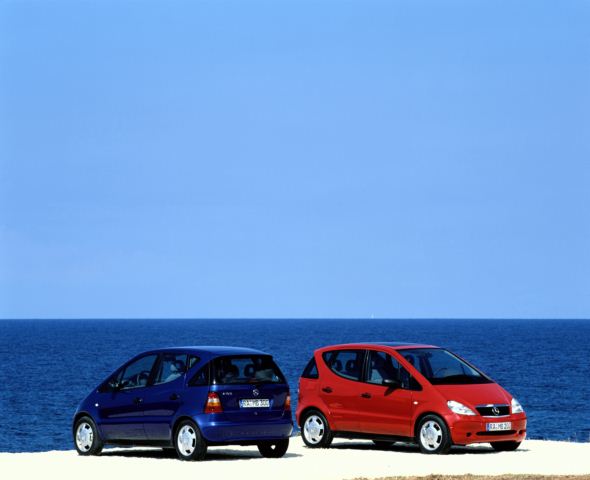
Entering new segments with the “Baby Benz” and the A-Class
- The route to the Mercedes-Benz 190 (W 201, 1982 to 1993) was an arduous one
- The NAFA local transport vehicle left its mark in 1981
- Innovative space concept: the A-Class (W 168, 1997 to 2005)
Nallinger pressed on with his plans for a smaller Mercedes-Benz, but things did not progress quickly. The technicians and designers were way ahead of the countdown to the decision – but the road to the W 201 model series, which first appeared in 1982 with the 190 and 190 E models, was to be a difficult one. Commenting in October 1977, when the basic decision for a third model series was made, the chairman of the supervisory board at the time, Wilfried Guth, said: “The birth of the idea that smaller cars can also be built, and that Daimler can enter another market segment with them, was a very, very laborious and very slow process.” The technicians and designers had already provided the hard facts a long time ago.
But without impetus from the USA, presumably these activities would not have been carried out either. That was where the requests for a Mercedes-Benz as a second car were coming from. In addition, the environmental legislation of the Clean Air Act laid down clear specifications for fleet consumption (Corporate Average Fuel Economy, CAFE) and also for the fuel economy of the model ranges sold in the USA. So in 1985, for example, an average consumption of 27.5 miles per gallon (equivalent to 8.6 litres per 100 kilometres) was stipulated. It was not possible to comply with this figure with the model range available at that time.
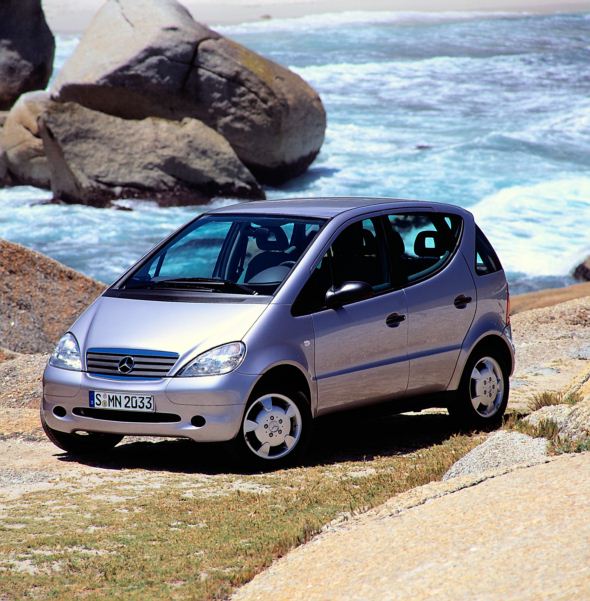
The specifications for the W 201 model series presented in February 1974, under the direction of Hans Scherenberg, already clearly laid out the key elements and dimensions of the future smaller
Mercedes-Benz. The dimensions were so clearly defined that the series production vehicle that was launched on the market almost nine years later hardly deviated from the specifications. And the specifications also laid down one other thing at that time: “Due to the characteristics expected of the brand symbol by customers in terms of quality, safety and refinement, the 201 should consciously differentiate itself from the other vehicles of the mid-range series.”
Werner Breitschwerdt, still head of bodywork in Sindelfingen at the time, under Scherenberg, did not waste much time and in 1974 had a vehicle from the W 115 model series cut up lengthwise and breadthwise and pieced back together based on the reduced dimensions of the planned W 201 series. In this way he was immediately able to gain an initial impression of the space.
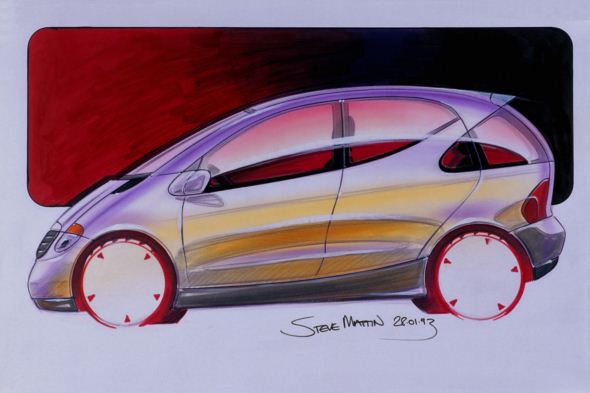
The W 201 model series represented the clear signal for the start of a new age: the brand was becoming younger. The new smaller Mercedes-Benz proved this by not only setting an example in terms of technology, comfort and safety, but by also heralding the start of a new era in terms of its design. Werner Breitschwerdt and Bruno Sacco came from a new generation of management who turned their understanding of a new modern Mercedes-Benz into reality with the W 201 model series. As such, they can be justifiably described as the fathers of the third model series.
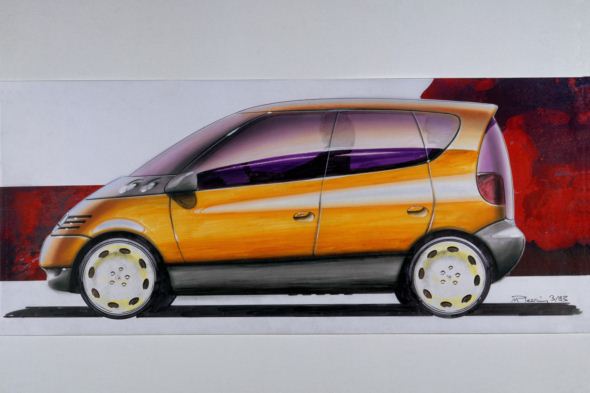
The first designs from 1974 still looked somewhat like small S-Classes from the W 116 model series. These so-called “Mercedesle”, as they were once appropriately described by designer Andreas Langenbeck, did not correspond to Sacco’s concept because they did not convey any formal individuality. He brought a halt to proceedings and prescribed some time-out from the project for his staff in order to gain a fresh, clear view of things. Claus Hieke, who subsequently became responsible for AMG design, still believes that Sacco’s biggest contribution was recognising that simply scaling down the dimensions of cars does not really achieve the desired aim.
In order to distance themselves from the project in creative terms, Breitschwerdt and Sacco let staff handle other projects, so as to be able to make a fresh attempt after a certain period of time had elapsed. The race was won in 1978 by a design from Peter Pfeiffer, which although still implemented as a coupé at the time, also comprised all of the essential elements of the subsequent W 201 bodywork, such as the inconspicuous kink running from the roof through the rear window and into the edge of the boot lid.
But this design was also characterised by details which were only incorporated much later, such as the door handles, which went into series production in the C 126-series SEC Coupé in 1981; the contrasting colour plastic side parts, incorporated into the range with the facelift in 1988; or the integrated grille, implemented in the W 140-series S-Class in 1991. At the board meeting in Sindelfingen on 6 March 1979, the executive board gave the final approval for the design. The bodywork was impressive, with its formal coherence, and became the trademark of a new design era at Mercedes-Benz. The new smaller Mercedes-Benz, affectionately named the “Baby Benz” in the USA, still impresses with its fresh appearance many years on.
As trend-setting as the design of the W 201 model series proved to be for Mercedes-Benz at the time, equally impressive were its handling, ride comfort and of course its passive safety too, all of which were just as good as the larger models. Making its debut was the introduction of independent multilink rear suspension, which helped to provide a high degree of driving safety with a level of ride comfort previously unknown and which is still basically produced today, albeit in an adapted form on the later models. The combination of agile handling, previously unheard of in Mercedes-Benz passenger cars, and ride comfort was unique in such a compact vehicle and acknowledged worldwide.
The W 201 model series was produced up until 1993. It evolved into the C-Class, with the development of the 202 series, which in the meantime has become available in a wide variety of body and engine variants.
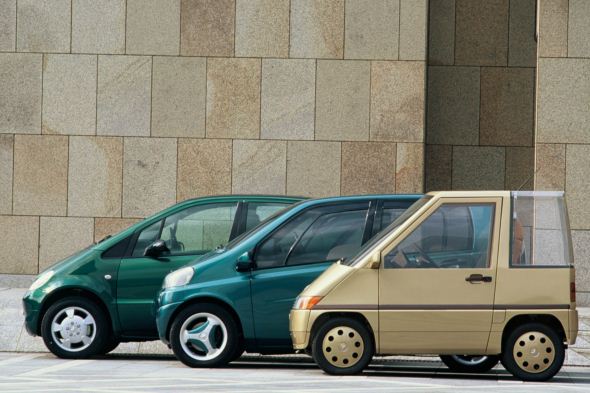
NAFA – the “local transport vehicle”
Congested roads, the need for parking spaces and long traffic jams raised new questions in terms of vehicle research. Mercedes-Benz responded to these issues in 1981 with the “local transport vehicle” concept study, or NAFA for short (after the German “Nahverkehrsfahrzeug”). Measuring 2.50 metres in length and 1.50 metres in both width and height, the innovative two-seater contradicted everything that the company had previously been known for.
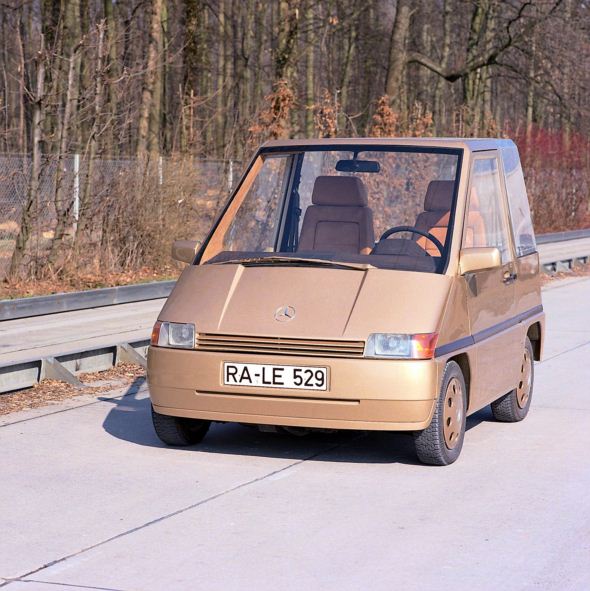
Thanks to four-wheel steering, the car could also be driven forward into narrow parking spaces, and its turning circle was no more than 5.7 metres. Even when clearance at the sides was restricted, two sliding doors helped make getting into and out of the vehicle convenient: they opened forwards and the exterior mirrors folded in automatically. The car featured front-wheel drive and an automatic transmission. Air conditioning, power steering and seat belt tensioners were also included. The comparatively high seating position, low beltline and large window areas also ensured it enjoyed optimum all-round visibility.
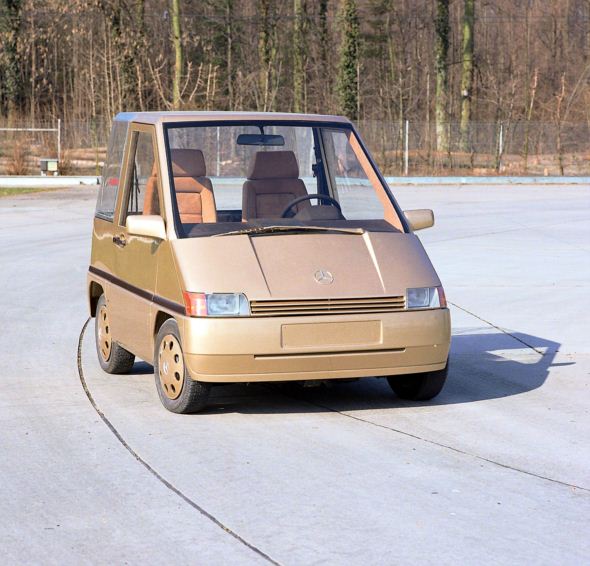
The NAFA study was not developed further into a series production vehicle. But it did not simply vanish into obscurity: the knowledge gained from it went into the design of the A-Class, the prototype of which made its debut in 1996. And the concept of a compact city car celebrated reaching the production stage in the form of the smart City Coupé, introduced in 1997 and known today as the smart fortwo, which has since gone on to be mass produced in large quantities.
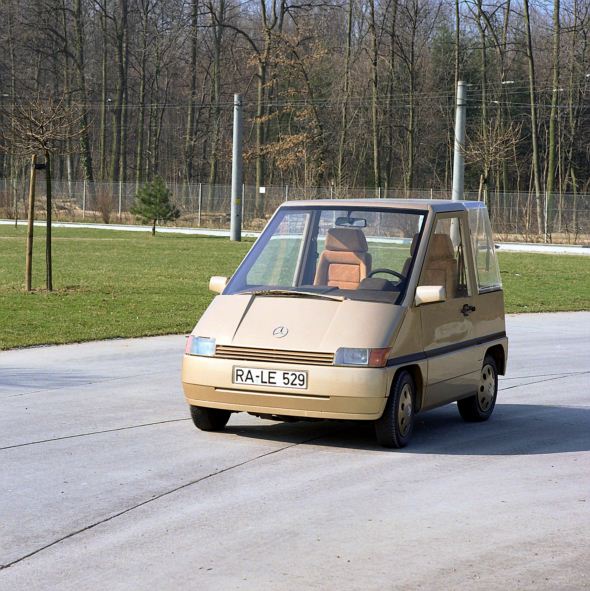
Mercedes-Benz A-Class (W 168, 1997 to 2004)
The desire for a car with very small external dimensions, and at the same time all of the values of the Mercedes-Benz brand, started to take shape at the start of the 1990’s. Mercedes-Benz introduced the sandwich principle, in which the body is divided into two horizontal planes: the drive unit is located in front of and under the floor pan, so that in the event of a crash it is pushed down and out of the way and does not penetrate into the interior.
In September 1993, Mercedes-Benz gave the public a foretaste of the A-Class at the International Motor Show (IAA) in Frankfurt/Main. Here the brand presented its Vision A 93, a front-wheel drive car featuring an innovative body design in which the engine, transmission, tank and axles were located below the passenger compartment: the sandwich principle had become a reality, and the combination of small external dimensions (length of 3350 millimetres) with a large, variable interior, and a Mercedes-Benz-standard level of safety, proved impressive. The Vision A 93 incorporated elements of the F 100 research vehicle, for example. The body of the one-off vehicle was made completely of aluminium. The concept of intelligent lightweight construction was later developed for the A-Class. It combined different materials such as steel, plastic, aluminium and magnesium. As such, the vehicle design was optimised just as much in terms of weight and environmental compatibility as it was in terms of costs.
The Vision A 93 demonstrated the versatility of vehicle design with three different engine variants. In addition to an economical petrol engine producing 55 kW and a direct-injection diesel engine producing 44 kW, there was also a version featuring a 44 kW electric drive. The one-off vehicle also boasted variability in the interior: the car could be modified depending on the situation – from a comfortable four-seater through to a cargo maestro with a stowage compartment volume of 1000 litres. This revolutionary space concept was once again based on the innovative, high horizontal frame floor assembly, which helped to ensure a level of crash safety previously unavailable in this vehicle category.
In 1994, Mercedes-Benz displayed a version of the concept vehicle named “Studie A”, modified in a number of details, at the Geneva Motor Show. The American magazine “Motor Week” awarded it the title of “Best Concept Car 1994”.
The positive response from the press and public lead to a quick decision being made by the Mercedes-Benz executive board. It was only in December 1993 that it had decided on series production of the A-Class. The project was assigned the model series number W 168, and the vehicle was to be produced at the Rastatt plant. At the International Motor Show in Frankfurt in September 1995, two years after the world premiere of the Vision A 93, the interior design of the A-Class was presented. Compared with the one-off vehicle, the overall length of the vehicle had in the meantime grown by 225 millimetres – and this was even before respectable space requirements increased further, particularly in terms of the luggage compartment.
The sandwich concept proved successful in 1996 in various crash tests at the development centre in Sindelfingen. The tests proved that even a vehicle with small crumple zones can still achieve the high safety standards of Mercedes-Benz. Furthermore, the A-Class not only fulfilled future EU guidelines for frontal impacts, but also complied with the strict safety specifications of the USA and the European Union for side collisions.
The A-Class finally made its official premiere in March 1997.
Mercedes-Benz presented the five-door version at the Geneva Motor Show. The commercial release followed eight weeks later in May 1997, and the car was then available in dealerships by October. Despite the “elk tests”, the A-Class was extremely successful. As part of a facelift in 2001, a version with a longer wheelbase was also introduced. The second generation of the A-Class followed in 2004 in the guise of 169 model series. This was available as a four-door Saloon and a two-door Coupé. The A-Class also formed the basis for the Compact Sports Tourer from Mercedes-Benz which was launched onto the market in 2005, designated as the B-Class, which also went on to became a very successful model.
